2004 Chrysler ME Four-Twelve Concept
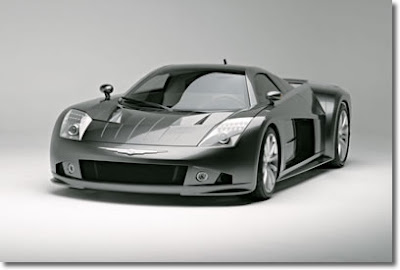
The ultimate engineering and design statement, and a brilliant example of the Chrysler Group's capabilities, the ME Four-Twelve will establish a real-world performance record for a rear-wheel drive, mid-engine super car and may also set a record for lightening-quick vehicle development. Taking less than one year to complete from start to finish, the Chrysler Group partnered with some of the best in the business to assist in its development.
"The ME Four-Twelve has been one of the most closely guarded secrets, not only to the outside world but also within our organization," said Trevor Creed, Senior Vice President - Chrysler Group Design. "The idea for this machine was conceived as a spectacular follow-up to the Dodge Tomahawk shown last year. The big difference is that Tomahawk was a design statement. ME Four-Twelve, however, is as much an engineering statement as it is a design statement."
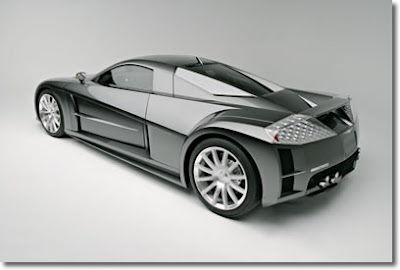 AMG Powertrain and Ricardo Clutch Transmission
AMG Powertrain and Ricardo Clutch Transmission
The heart of the ME Four-Twelve is its all-aluminum, quad-turbo, 6.0-liter V-12 engine. With electronic sequential multipoint fuel injection and a 9.0:1 compression ratio, the ME Four-Twelve's AMG-developed engine delivers 850 bhp @ 5750 rpm, with 850 lb-ft. (1150 N-m) of torque between 2500 and 4500 rpm on premium unleaded fuel. The specific power output translates to 142 bhp/liter, and with a curb weight of just 2880 lbs. (1310 kg), the ME Four-Twelve has the weight-to-power ratio of 3.4 lbs/bhp - each of these sets new performance records and new benchmarks in the super car category.
And, befitting a machine that will play comfortably in the super car league, the performance of the ME Four-Twelve is stunning. In our projections and modeling, the ME Four-Twelve goes from 0-60 mph in 2.9 seconds, 0-100 mph in 6.2 seconds and it will blister through the quarter mile in 10.6 seconds at 142.0 mph. The estimated top speed of the ME Four-Twelve is 248 mph (400 km/h). The vehicle is designed and packaged to achieve outstanding thermal performance under extreme operating conditions.
The 7-speed Ricardo Double Clutch Transmission was developed specifically for this vehicle and features the latest double wet-clutch technology and electronic control strategy. The exclusive ME Four-Twelve transmission delivers uninterrupted torque to the rear wheels with 200 millisecond shift times.
Advanced Composite Structure
The ME Four-Twelve's advanced, carbon fiber bodywork was designed to mate to a carbon fiber and aluminum honeycomb monocoque tub. Aluminum crush structures and chrome-moly sub-frames complete the ME Four-Twelve's rigid support structure. Taking advantage of its impressive racecar-like structural rigidity, the ME Four-Twelve's suspension, steering and brakes are engineered for super car performance. Overall, the vehicle's structure - consisting of multiple materials - achieves an ultra lightweight design with outstanding vehicle rigidity and complies with all US federal regulations related to impact testing.
The suspension is comprised of double wishbones, aluminum control arms, horizontally-opposed coil-over dampers with electronically controlled compression and rebound tuning, stainless-steel push rods and a blade configured anti-roll bar.
ME Four-Twelve wheels are cast aluminum: 19x10-inch front and 20x12.5-inch rear. Michelin high-performance radials are 265/35ZR19 in the front and 335/30ZR20 in the rear.
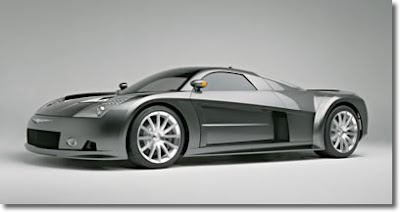 Ultimate Chrysler Engineering and Design Statement
Ultimate Chrysler Engineering and Design Statement
At just 44.9 inches tall, 78.7 inches wide and 178.8-inches long, the two-seat, mid-engine ME Four-Twelve has a striking presence - poised as if ready to pounce. The ME Four-Twelve carbon fiber body work has that "chiseled all from one piece" look, honed from hours of development in the Chrysler Group wind tunnel in Auburn Hills, Mich.
The computer controlled active rear spoiler articulates rearward 100 mm to increase down-force to a total of 925 lbs. (421 kg) at 186 mph (300 km/h), while achieving a competitive coefficient of drag (Cd) of 0.358. This results in unwavering stability at the ultra-high speeds of which ME Four-Twelve is capable. All body openings have been optimized to achieve maximum thermal performance. In addition, large vented front and rear wheel houses reduce lift as well as active and passive aerodynamic devices that have been implemented to provide stable vehicle performance at all speeds.
Interior Environment
This vehicle breaks the mold of the super car genre because its packaging can easily accommodate drivers in a wide range of heights. Ease of access to driving controls was a primary focus. For example, there are steering wheel mounted controls, including a column mounted F-1 racing style paddle shifter with aluminum shift paddles and centrally mounted driver controls.
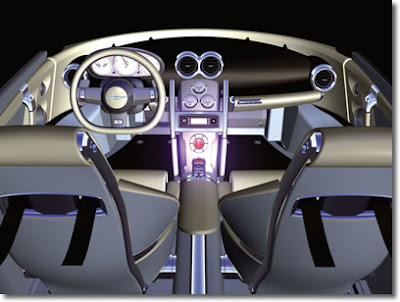 "In terms of advanced materials, aerodynamic efficiency and vehicle dynamic performance, the ME Four-Twelve represents the ultimate engineering and design statement from Chrysler," said Wolfgang Bernhard, Chief Operating Officer - Chrysler Group. "It's everything we've learned about creating exciting, desirable automobiles. And, as such, it's not really a concept car but is, in fact, a prototype that will be road-ready by summer."
"In terms of advanced materials, aerodynamic efficiency and vehicle dynamic performance, the ME Four-Twelve represents the ultimate engineering and design statement from Chrysler," said Wolfgang Bernhard, Chief Operating Officer - Chrysler Group. "It's everything we've learned about creating exciting, desirable automobiles. And, as such, it's not really a concept car but is, in fact, a prototype that will be road-ready by summer."
Chrysler ME Four-Twelve Revealed
[RSportscars]
2007 Caterham X330 Concept
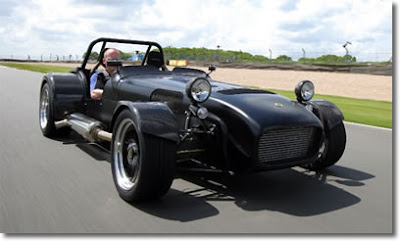
The stealthy, matt black concept is based around the range-topping CSR Superlight, but the addition of a supercharger to the four-cylinder 2.3-liter Ford Duratec engine increases power massively from 260 to 330 bhp - as the name suggests.
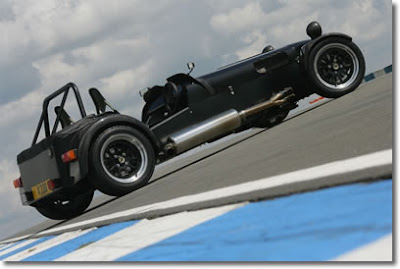 That means the X330's equivalent power-to-weight ratio puts it ahead of the Bugatti Veyron (521 bhp per ton) and the McLaren F1 (559 bhp).
That means the X330's equivalent power-to-weight ratio puts it ahead of the Bugatti Veyron (521 bhp per ton) and the McLaren F1 (559 bhp).
The near 35% power hike is achieved by a Rotrex C30-94 supercharger, which provides a boost characteristic that rises linearly with engine speed. In other words, although the X330's punch is greater at higher revs and speed, low-speed driveability isn't compromised thanks to an exceptional torque curve with over 221 lb-ft from 5500 to 7500rpm - 20 lb-ft more than the CSR260.
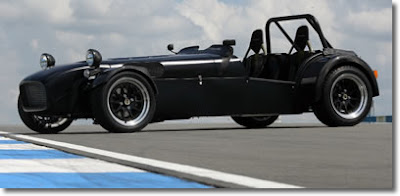 As the X330 is an engineering test bed, it is envisaged that some of the concepts will eventually find their way into production. To begin with the X330 will spearhead the British firm's R&D into bioethanol power in the coming months as it seeks to assess the viability of alternative fuel sources in road and race applications and cement a further 50 years of history for the legendary Seven.
As the X330 is an engineering test bed, it is envisaged that some of the concepts will eventually find their way into production. To begin with the X330 will spearhead the British firm's R&D into bioethanol power in the coming months as it seeks to assess the viability of alternative fuel sources in road and race applications and cement a further 50 years of history for the legendary Seven.
In keeping with the Seven ethos of 'adding lightness', the extremity of the X330 doesn't stop at moving parts. Lighter gauge steel is used in the trellis-style chassis and the use of new lightweight wheels together with an abundant use of carbon fiber for the bodywork all adds to the stealth appearance of this perfect 50th birthday present.
Supercharged Seven is the Most Powerful Caterham Thus Far
[RSportscar]
2007 Caparo T1
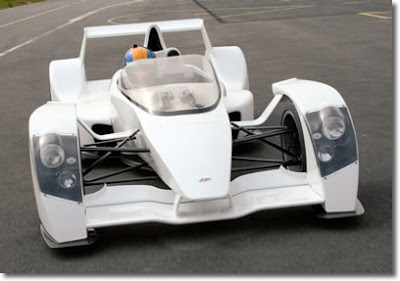
This exclusive preview of the first prototype T1 forms a significant centerpiece for the show, which was held at the Grimaldi Forum in Monte-Carlo in the heartland of one of the world's most glamorous locations and centers of motoring heritage. The presentation of the aerodynamically formed supercar was witnessed by Caparo Vehicle Technologies' design director Ben Scott-Geddes and engineering director Graham Halstead, the two ex-McLaren engineers whose inspiration helped create the car.
Previously known as the Freestream T1, Caparo, a $1.3 billion multinational company involved in manufacturing vehicle structural components, acquired the project started by Ben Scott-Geddes and Graham Halstead, and renamed it to Caparo T1. In March 2006 the group announced its advanced automotive technology and engineering design company called Caparo Vehicle Technologies. The new company will provide advanced technology development, materials engineering and design services to mainstream automotive, motorsport and aerospace markets. Coupled with its global manufacturing resource and capability Caparo aims to accelerate the use of lightweight materials in vehicle structures.
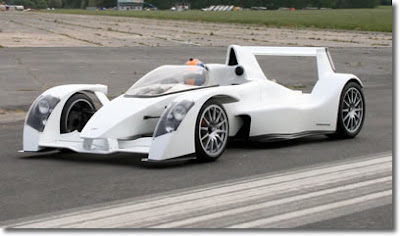
Launched in the Summer
The Caparo T1 will be launched in the summer 2007 with a new and more powerful engine than previously mooted.
The bespoke lightweight, all aluminum V8 has a higher capacity of 3.5 liters and is now normally aspirated. The engine has a mass of less than 220 lbs and can produce power outputs of up to 550 bhp. The T1 will maintain an ultralight kerb weight of approximately 1100 lbs; around one-third the mass of the average family saloon.
The Caparo V8 has been designed from scratch and is comparable to Formula One and Indy race car specifications.
"This new engine allows us many exciting options for the future, both for the car and the company," said Richard Butler chief executive Caparo Vehicle Products. "It will further help us to implement the vehicle lightweight design philosophies necessary to reduce greenhouse gasses being sought by high volume carmakers."
Ben Scott-Geddes operations director at Caparo Vehicle Technologies and the car's co-designer added: "The new engine now delivers both the performance and reliability we're looking for in the T1, the two key factors vital to our customers when running this type of car."
Sean Butcher commercial director at Caparo Vehicle Technologies said: "Given the high engine output, increased power-to-weight ratio, advanced hybrid chassis design and ultra-efficient aerodynamics the T1 offers exceptional value for such an exclusive world class vehicle ... and quite extraordinary standards in performance, handling and safety."
The T1's high power-to-weight ratio delivers phenomenal performance on the track. Similarly, the same principles of lightweight design in a car one-third the weight of the average family saloon combined with a normal 15 gallon (70-liter) fuel tank means a range better than the average car of up to 500 miles on public highways. And that is sufficient to tackle seven hours of driving from London to Le Mans, a distance of 338 miles (544 km), without refueling, before putting in a blistering performance on the circuit.
Commenting on the mould-breaking Caparo T1, Angad Paul said: "This car is in a class of its own when it comes to overall performance; but it also addresses in the most dramatic way possible fundamental design issues facing the automotive industry today. The same approach to aerodynamics, choice of materials and efficient design, which have allowed us to achieve the world's most reasonably priced supercar, can be applied in equal measure to create affordable, safe, yet lightweight, fuel-efficient family cars."
The Record-Braking Caparo T1 Unveiled in Monaco [RSportscars]
2008 Cadillac CTS Coupe Concept
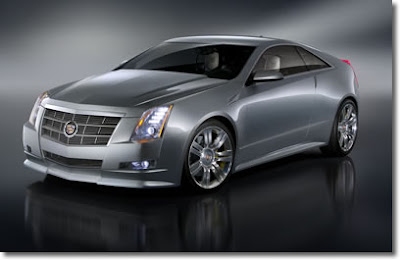
The CTS Coupe takes Cadillac's acclaimed Art and Science design language and adds more of both. More expressive, more technical and very personal, the CTS Coupe extends the dramatic design of its sedan predecessor with all-new sculpted bodywork aft of the front fenders.
A Design Gem
Among the CTS Coupe Concept's signature design cues are a number of elements that suggest the look of a carefully cut diamond - particularly at the rear. These elements are seen in everything from the chrome header above the rear license plate holder to the indents that comprise the basic form of the rear fascia.
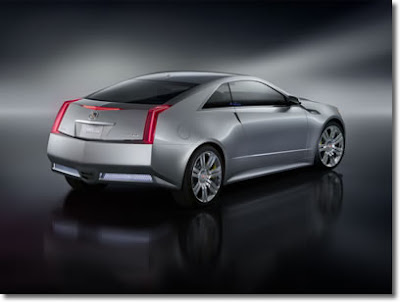 "The diamond-cut elements enhance the sleek profile of the car," said John Manoogian II, director of exterior design for Cadillac. "The CTS Coupe uses the elements, along with other nods to classic Cadillac cues - such as vertical headlamps and taillamps - to acknowledge the brand's heritage without resorting to nostalgia. It is a forward-looking design in every sense of the term."
"The diamond-cut elements enhance the sleek profile of the car," said John Manoogian II, director of exterior design for Cadillac. "The CTS Coupe uses the elements, along with other nods to classic Cadillac cues - such as vertical headlamps and taillamps - to acknowledge the brand's heritage without resorting to nostalgia. It is a forward-looking design in every sense of the term."
Although based on the sedan, the CTS Coupe shares only the instrument panel, console, headlamps, front fenders and grille with the production model.
The surfaces of CTS Coupe Concept are complex, inviting careful inspection. The rear fenders, for example, were sculpted by hand in the design studio until they provided a perfect, muscular form that wrapped tightly over the wheels. At the top, the rear fenders are beveled - owing to the diamond-cut theme - and become part of a horizontal plane that runs from the leading edge of the taillamps and merges into the roof.
Personal Passenger Environment
A classic 2+2 interior environment enhances the CTS Coupe's personal feel. It shares the hand cut-and-sewn instrument panel and center console with the CTS, but features unique front and rear seats, a continuous console running between the front and rear seats, and custom door panels.
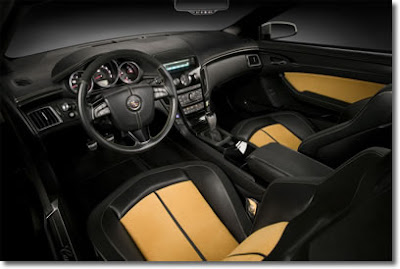 Custom-trimmed sport seats from Recaro are located in all four positions. They support the grand-touring nature of the car and are covered in rich, black and suede-like microfiber material, with yellow ochre-colored inserts. The yellow ochre color provides dramatic contrast with the black surrounding trim, but is a subdued hue consistent with the interior's overall feeling of refinement. Yellow ochre stitching also is used throughout, including the seats, instrument panel, shifter knob and more.
Custom-trimmed sport seats from Recaro are located in all four positions. They support the grand-touring nature of the car and are covered in rich, black and suede-like microfiber material, with yellow ochre-colored inserts. The yellow ochre color provides dramatic contrast with the black surrounding trim, but is a subdued hue consistent with the interior's overall feeling of refinement. Yellow ochre stitching also is used throughout, including the seats, instrument panel, shifter knob and more.
Black microfiber fabric covers the front armrest, as well as an armrest located between the rear seats. The armrests are part of a continuous console that stretches from the instrument panel to rear seats. Carbon-fiber trim accents the console. The interior also features ambient lighting throughout, creating a distinctive environment at night.
Performance-Bred Powertrain and Suspension Systems
As is the case with its design, the CTS Coupe extends the acclaimed capabilities of the sedan in terms of performance technology. This includes the capability to support a broad engine range of gasoline and diesel engines.
The CTS Coupe, of course, ascertains the sedan's 3.6L V-6 engines, including the 304-horsepower Direct Injection power plant. The Coupe Concept also is designed for a new 2.9L turbo-diesel being developed for international markets. This new engine, tailored for use in the CTS, will deliver an estimated 250 horsepower and 406 lb-ft of torque.
A six-speed manual transmission backs the engine, sending torque to an independently sprung rear axle. The CTS Coupe's sport-tuned suspension gives it a slightly lower ride height than a production CTS - a look enhanced by the car's rakish shape and large, 20-inch front and 21-inch rear wheels.
Behind the chrome, split-spoke, aluminum alloy wheels is a set of high-performance brakes, featuring cross-drilled rotors. Six-piston calipers clamp down on the front rotors, while four-piston calipers grab the rear rotors. All of the rotors have a distinctive, yellow-painted finish.
CTS Coupe Concept Celebrates Cadillac's Design Renaissance [RSportscars]
2007 Buick Riviera Concept
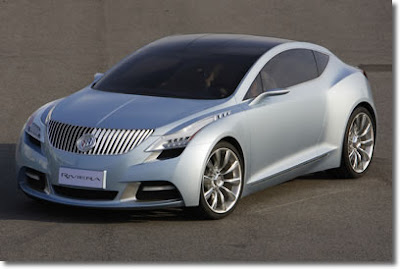
The gullwing Riviera concept coupe was developed with global design input by the Pan Asia Technical Automotive Center (PATAC) in China, a design and engineering joint venture between General Motors and Shanghai Automotive Industry Corporation (SAIC).
The Riviera has been engineered to accommodate a new hybrid system that will go into production at Shanghai GM, GM's flagship joint venture with SAIC, in 2008.
The fuel-efficient car, which will feature several technological and manufacturing advances, represents the latest achievement of GM and its partners in the promotion and development of alternative propulsion technologies in China.
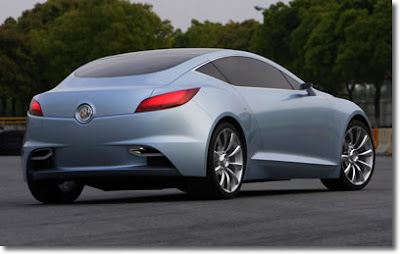 The Buick Riviera, with its tightly stretched carbon fiber body panels, combination of positive and negative curves, strong front and rear identities and gullwing doors, captures the essence of Buick classics, Welburn said, while presenting a thoroughly 21st century design.
The Buick Riviera, with its tightly stretched carbon fiber body panels, combination of positive and negative curves, strong front and rear identities and gullwing doors, captures the essence of Buick classics, Welburn said, while presenting a thoroughly 21st century design.
Exterior Design - A Sense Of Existence, Not Anonymity
To establish their design direction, PATAC designers looked in part to Buick icons such as the original Y-Job Concept of 1938, the 1960s Le Sabre, Electra 225 and the Riviera coupes of the 1960s and '70s.
The Riviera design is structured around the Buick tri-shield logo, sitting proudly on a trihedral waterfall grille which is formed by three meeting planes. This takes the traditional Buick treatment to a new level of sophisticated boldness.
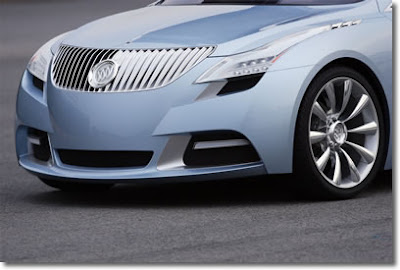 The Buick logo leads into a reflective strip through the hood, a mark of respect to the distinctive mid-hood crease prevalent in classic Buicks. Elongated LED headlamps flow up the hood sides to three-section, top-mounted chrome portholes as a single piece of jewelry.
The Buick logo leads into a reflective strip through the hood, a mark of respect to the distinctive mid-hood crease prevalent in classic Buicks. Elongated LED headlamps flow up the hood sides to three-section, top-mounted chrome portholes as a single piece of jewelry.
The logo, hood strip, headlamps, side mirrors and rocker covers all have 'icy green' backlighting available at night, matched by backlit logo and exhausts at the rear.
Designers have cleverly incorporated several other design signatures from the original Riviera generation. They include the "double sweep spear" line along the bodyside and the flared tail design. In this theme, the 'Shell Blue' exterior color was chosen to elicit the right level of attention. The color is a metallic silver with light blue accents, perfectly highlighting the coupe's exterior curves.
The gullwing doors, selected for their exotic appeal, achieve an expansive entrance to the two-plus-two seating configuration. Measuring 1938 millimeters at their widest point, they add to the coupe's sleek sideline. At night, fully opened doors gently shine the "Buick" name on the ground.
The Riviera sits on 21-inch 10-spoke forged aluminum wheels, combining polished and satin finishes, with low-profile tires. Taking their cue from Formula One cars, the side mirrors are sweeping yet unobtrusive.
Interior Design - All About Relaxation
In a word - sanctuary. The use of rich blue and subtle creams, representing earth and water themes, are conveyed through high-quality leather bucket seats, plush carpet and a luxurious padded steering wheel. Completing the organic feel, the roof comprises two shaded glass windows offering increased headroom and a celestial connection for occupants.
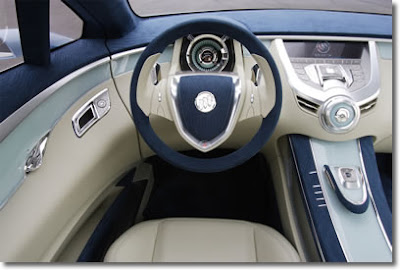 The three-dimensional speedometer, inspired by past classics but utterly modern in design, compliments the touchpad styled central console loosely modeled on a computer mouse. An LCD display screen crowns the central console.
The three-dimensional speedometer, inspired by past classics but utterly modern in design, compliments the touchpad styled central console loosely modeled on a computer mouse. An LCD display screen crowns the central console.

China-Designed Gullwing Coupe
[RSportscars]
Breckland Beira V8
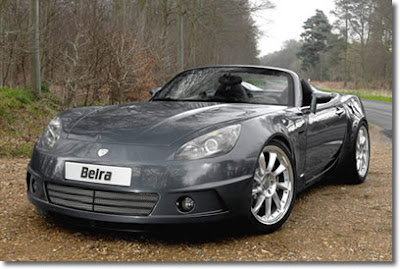
- Supercar performance at a fraction of supercar cost
- Dual-fuel, for environmental benefit and reduced running costs
- On sale from November 2008
London's Canary Wharf is the stage for the show debut of a stunning new British sportscar on June 9, as Breckland Technology removes the wraps from its exclusive two-seat V8 soft top, the Beira, at London Motorexpo.
Norfolk-based Breckland - part of Hong Kong-based multi-national, Riche Holdings - is vastly experienced in the development and production of high-quality, low volume specialist cars and prototypes for an array of prestigious international clients, including Mosler, and has now employed its substantial skills in the making of its own limited-production supercar.
The Beira is a hand-built, two-seat roadster with unique styling cues, based on proven GM architecture and powered by GM's LS2, 6-litre V8 engine, tuned to produce just a whisper short of 400bhp.
Tipping the scales at some 1,400kg, the Beira's impressive power-to-weight ratio ensures invigorating performance, with the promise of a sub-five second sprint to 100kph, coupled with tremendous torque and a governed top speed of 155mph.
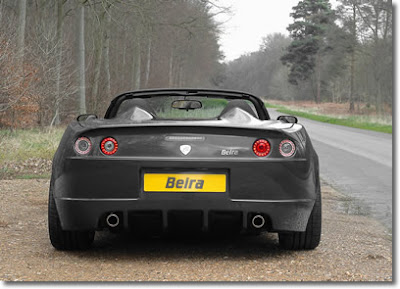
"Beira carries on from where Marcos and TVR left off in terms of providing maximum performance for money spent, and real individuality", says Breckland Director, Mike Rawlings.
"We wanted to showcase Breckland's design and engineering capabilities and produce an exciting driver's car, with excellent handling dynamics, terrific performance and great looks," he added.
"We also looked seriously at environmental concerns and, as a result, Beira is designed to run on Liquefied Petroleum Gas as well as petrol. This not only helps to reduce running costs and emissions, but also means Beira is capable of a range of some 700 miles between refuelling stops - that's the equivalent of travelling non-stop from the north to the south coast of France.
Beira dynamics Beira is based on the well-developed General Motors Kappa platform, on sale in the North American market.
Beira differs in many significant respects from the GM products however, the most radical departure being the installation of the potent, 6.0-litre, LS2 V8 engine, more commonly found in Corvette and Pontiac GTO models. It replaces the four-cylinder Ecotec engine and, by comparison, produces more than twice the power of the original unit.
"We didn't set out to reinvent the wheel with Beira," says Engineering Director, Mark Easton. "The Kappa platform offers a highly competent chassis, which has been subject to intensive crash and safety tests, and is readily available.
"Since all of the hard work has been done, it has enabled us to keep development costs low. Over the years, and through our own experience, we've seen many supercars come and go, due in part to their massive development costs, and we were adamant that we would not fall into the same trap. That's why we developed the Beira where we needed to, not for the sake of it. It has also enabled us to bring the project to fruition in less than 12 months."
The mighty, fuel-injected, aluminium V8 and Tremec six-speed manual gearbox are neatly packaged under the Beira's swooping bonnet, with a bespoke wiring harness and ECU, the latter being reprogrammed to allow the V8 to deliver close to 400bhp, combined with a dual-fuel capability.
Other key considerations involved significant attention to chassis dynamics, to ensure the car corners, steers and brakes effectively with the significant increase in engine output.
To satisfy this requirement, the fully independent suspension was entirely re-engineered by Breckland in association with KW Suspension, with uprated springs, dampers and bushes, plus thicker anti-roll bars front and rear. The result is slightly less suspension compliance, but a more focused ride and handling.
Stopping power is provided by impressive, 325mm ventilated discs on all four corners, the fronts being grasped by six-pot callipers, with four-pot at the rear, both from UK specialists, HiSpec.
Steering is via power-assisted rack and pinion, whilst the dramatically styled 18" cast alloy wheels are 8.5" front and 9.5" rears, shod with Bridgestone ultra-low profile tyres. Customer options include an upgrade to 19" diameter rims and tyres.
Exterior packaging
In order to make the Beira eye-catchingly different, save weight and liberate additional luggage space behind the passenger compartment, Breckland's design engineers have totally re-modelled both the front and rear body sections in-house, using lightweight composites instead of steel, the result being a highly distinctive nose section and pronounced fastback rear.
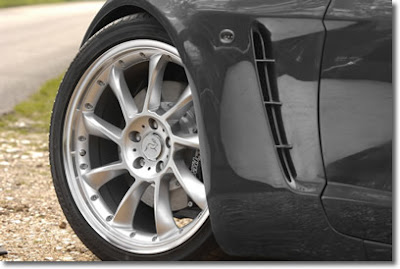 Despite the inclusion of an additional 70-litre LPG reservoir to go with the existing, 13-gallon petrol tank, the Beira features a significant increase in usable luggage space with the hood down, thanks to some clever packaging solutions.
Despite the inclusion of an additional 70-litre LPG reservoir to go with the existing, 13-gallon petrol tank, the Beira features a significant increase in usable luggage space with the hood down, thanks to some clever packaging solutions.
GM steel doors are used to ensure excellent side-impact protection and good sealing properties, while crash protection front and rear is provided by transverse aluminium crush structures attached to the hydro-formed steel chassis. Both front and rear bulkheads are steel to provide rigidity to the windscreen and hood.
Bespoke interior
Beira features a custom-built interior, including electric windows, air conditioning, twin airbags - in the steering wheel and in the passenger dash - combined with clear, concise instrumentation, and hand-stitched leather/Alcantara seats and trim.
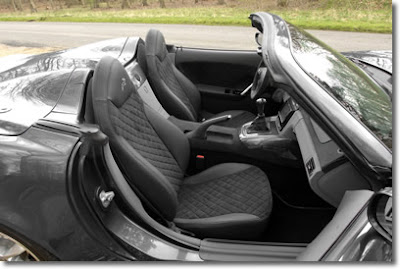
Breckland stresses that the Beira's interior can be customised to specific buyer requirements in terms of materials and equipment - one significant benefit of the company's inherent flexibility as a low-volume producer.
The stylish central instrument cluster incorporates a double DIN showcase of mobile entertainment from in-car specialists, Clarion. Its immense specification includes a 7" TFT colour touch screen, DVD player, direct iPod and Bluetooth connectivity, and an in-built 30Gb hard disk drive (HDD) navigation system with full European mapping. Beira buyers can also opt for the rear reversing camera, which relays the view behind onto the same in-dash display.
A GM manual cloth hood with heated rear screen is retained on the Beira and, when folded down, stows quickly and neatly out of sight under the deck lid for a smooth,
integrated appearance. This is further accentuated by the sculpted deck lid, incorporating individual fairings behind driver and passenger.
Affordability
The Breckland Beira is designed very much as a high-quality low-volume, affordable sportscar for enthusiasts, and follows the highly appealing tradition of installing an easily available, American-designed V8 engine in a small, nimble, two-seater chassis to produce an exhilarating, high-performance package. Although using a tried and trusted concept, however, Beira is very much a vehicle for the 21st century, and accomplishes this with both environmental and fuel efficiency concerns in mind.
"We have received tremendous interest, and orders, for Beira already," says Mike Rawlings. "The car debuts in left-hand drive form, underlining its appeal to enthusiasts in Europe and well beyond, and will be available in the UK and internationally via our appointed agent network from November 2008."
The Breckland Beira on-the-road price will be confirmed shortly but is expected to be in the region of £55,000 in the UK.
PRESS RELEASE NEW BRITISH SPORTSCAR POISED TO SET PULSES RACING Breckland Beira breaks cover at Motorexpo, Canary Wharf
2009 Bentley Arnage Final Series
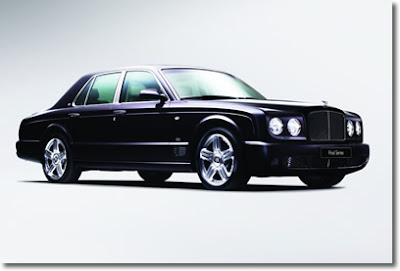 • Handcrafted at Bentley, Crewe, Arnage Final Series is an exclusive run of 150 cars, celebrating the last of Arnage
• Handcrafted at Bentley, Crewe, Arnage Final Series is an exclusive run of 150 cars, celebrating the last of Arnage
• Arnage Final Series is the culmination of 90 years of Bentley heritage and marks the 50th anniversary of the company's iconic V8 engine
• Arnage Final Series also signals the end of an era as Bentley prepares for the future
Since its debut in 1998 the Arnage has conveyed an air of sophisticated understatement as the four-door flagship of the Bentley range. Over the last decade the car has undergone a process of constant refinement to its body, design, chassis and powertrain to maintain its class-leading position in the high luxury market. To celebrate 10 years of the Arnage, 50 years of its mighty V8 engine and 90 years of the marque, Bentley Motors will launch its limited edition model at the Paris Motor Show next week.
Called the Bentley Arnage Final Series, the new model features a unique specification, combining the performance of the 500 bhp Arnage T with the refinement of the Arnage R and design elements from the Brooklands coupe, for the ultimate expression of British luxury and effortless power in a four-door saloon - a grand finale, for the grandest of Bentleys.
Hand crafted at Bentley's Crewe facility, the Final Series is an exclusive run of 150 cars, a unique example of the marque's flagship created to bid 'farewell' to the highly successful Arnage line in the most appropriate manner and style. Bentley Chairman and Chief Executive, Dr Franz-Josef Paefgen, explains:
"For 10 years, Arnage has enjoyed extraordinary success at the pinnacle of the luxury saloon market. The Final Series is a celebration of the Arnage era as Bentley prepares for the next generation of its flagship model."
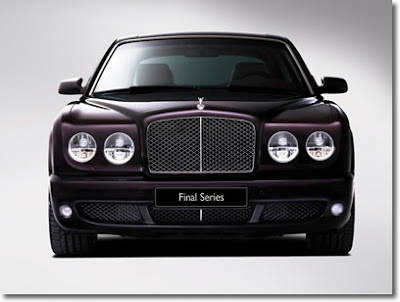
BENTLEY ARNAGE FINAL SERIES - NEWS IN BRIEF
• Limited production run of 150 cars
• Arnage T powertrain with 6¾ litre twin-turbocharged V8 engine, producing 500 bhp and 1000 Nm of torque
• Six-speed ZF automatic transmission with sophisticated locking torque converter provides fast yet ultra-smooth gearshifts
• Electronic Stability Programme (ESP) logic system improves dynamic response and handling with less intrusive intervention when a reduction in grip is detected
• Tyre Pressure Monitoring System fitted as standard
• Exterior design styling changes include:
o 20-inch five-spoke alloy wheels
o Retractable 'Flying B' bonnet mascot
o Body coloured headlamp bezels
o Dark tint matrix upper and lower grilles
o Lower front wing air vents
o 'FINAL SERIES' badge on front wings
o Bentley 'Jewel' fuel filler cap
o Twin exhaust tail pipes
• Interior design enhancements include:
o 'FINAL SERIES' treadplates to front doors
o Drilled alloy brake and accelerator pedals
o Waistrails with inset chrome strip and recessed Bentley marque badges (for the first time on Arnage)
o Rear cocktail cabinet and document stowage trimmed in hide
o FINAL SERIES stainless steel flask and shot glasses
o Two picnic tables available in a range of premium unbleached veneers
• Four Bentley umbrellas with wooden handles
• Further enhancements to the standard Final Series specification include:
o Large display audio head unit with Secure Digital (SD) memory card slot
o Removable rear cup holders for rear centre armrest
o Hide covered boot rail
• Further enhancements to the Final Series optional specification include:
o iPod interface
o Rear remote control for infotainment system
o Naim for Bentley audio system: 1100W, 10 speakers and next-generation Digital Signal Processing (DSP) with eight modes to create the world's best in-car sound stage.
A COMMANDING ROAD PRESENCE
For the last 10 years the Arnage's combination of muscular lines and understated luxury have endowed it with a commanding road presence synonymous with all Bentley Grand Tourers, subtly conveying the car's formidable performance potential. This powerful exterior profile is underpinned by a torsionally stiff bodyshell (with an astonishing 6,500 spot welds) that helps to deliver outstanding ride and refinement.
Based on the sporting Arnage T, the Final Series offers a range of discreet exterior cues that further enhance its powerful stance. Key ingredients of the distinctive appearance include a dark-tinted Bentley matrix radiator grille with Flying 'B' mascot and dark-tinted lower grille. The iconic Flying 'B', which can retract neatly into the grille surround, was originally designed by motoring artist F. Gordon Crosby and was first used on the 1930 Bentley 8-Litre.
The Arnage Final Series is further distinguished by exterior design features first seen on the exclusive Bentley Brooklands coupe, comprising 20-inch five-spoke, two-piece alloy wheels and 'Le Mans' lower front wing air vents.
Additional unique features include body-coloured front and rear lamp bezels, 'jewel' fuel filler cap (made from billet aluminium) together with 'Final Series' wing badges and polished stainless steel treadplates to the front doors.
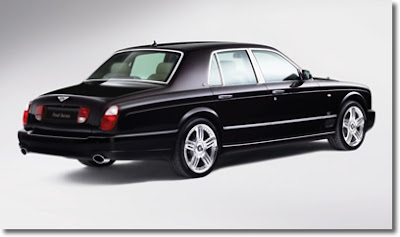
EXQUISITE CRAFTSMANSHIP
The Arnage Final Series will have a very special appeal to Bentley customers, as Peter Guest, Head of Department, Body & Trim, explains:
"Thanks to its hand-built exclusivity and superb quality, Arnage has become a world-wide benchmark for automotive craftsmanship. The Final Series epitomises the truly bespoke feel we aspire to and are determined to maintain."
Inside, the Final Series is everything you would expect of a bespoke Bentley, offering the highest levels of hand-craftsmanship to a small, but discerning audience. The interior offers a remarkably spacious, luxury cabin to provide the ultimate in first-class travel for four adults.
Many of the most desirable Mulliner options are included in Final Series as standard, most notably the hand-made waistrails with inset chrome strip with recessed Bentley badges, the new rear cocktail cabinet and document storage trimmed in hide, plus the beautifully designed picnic tables available in a choice of three premium unbleached wood veneers - all prime examples of Crewe craftsmanship.
Bentley is the only automobile manufacturer in the world to offer as standard a cabin trimmed entirely with leather hides - including the headlining. The hand-crafted steering wheel requires up to 16 hours of double-stitching.
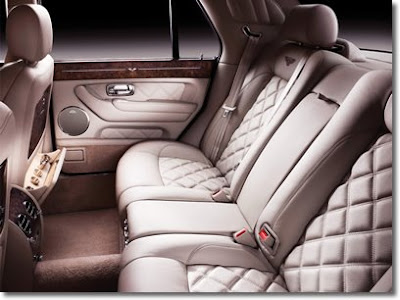 A set of mirror-matched veneers for each car takes 13 days to craft, while 17 hides and almost 400 separate pieces of leather are used for the upholstery, trim and headlining. Arnage Final Series spans the many eras between traditional coachbuilding skills and 21st century high-performance automotive engineering.
A set of mirror-matched veneers for each car takes 13 days to craft, while 17 hides and almost 400 separate pieces of leather are used for the upholstery, trim and headlining. Arnage Final Series spans the many eras between traditional coachbuilding skills and 21st century high-performance automotive engineering.
As in every Bentley, peerless craftsmanship and bespoke finishing are to the fore. Every item of trim, be it veneer, hide or chromed bezel, uses authentic materials. Built by hand, the creation of each Arnage takes a minimum of six weeks and owners can take full advantage of Mulliner, Bentley's specialist commissioning department, as Trevor Gay, Personal Commissioning Manager, Mulliner elaborates:
"Up to 80 percent of Arnage customers specify Mulliner features. Mulliner is completely dedicated to fully understanding their requirements and to delivering a bespoke experience and a uniquely high level of personal service."
Arnage Final Series is available in the full Bentley range of 42 exterior colours, 25 interior hides, and three veneers, plus the comprehensive line-up of Mulliner options and its bespoke colour-matching service that enable Bentley owners to create a uniquely personal car.
To help customers finalise the specification of their Arnage Final Series, the Bentley design team recommends six classic colour and trim combinations - Titan Grey (with Anthracite interior), Royal Ebony (with Beluga), Windsor Blue (with Windsor Blue), Meteor (with Imperial Blue), Burnt Oak (with Burnt Oak) and Black Velvet (with Burgundy).
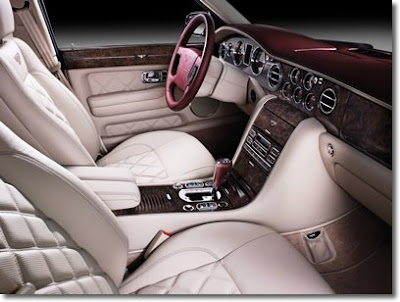
NEW FEATURE ENHANCEMENTS
Arnage Final Series buyers will also benefit from a range of standard and optional feature enhancements. Standard enhancements include:
• New audio head unit - with larger display screen and an SD (secure digital) memory card slot instead of the single CD slot.
• New rear cup holders - displaying Bentley craftsmanship, these removable cup holders attach to the front edge of the rear centre armrest, or can be stored inside the armrest.
• New hide covered boot rail - features coordinated leather trim and a chrome strip along the top edge.
New optional enhancements available at extra cost:
• iPod Interface - links to the Infotainment system and enables customers to play their favourite music through the car's audio system. Supplied with connectors for iPod, USB, Mini USB and a 3.5mm AUX jack. Includes a 12 volt power outlet for charging purposes.
• Rear remote control - enables the rear seat passengers to control the infotainment system. When not in use it can be stored in a dedicated pouch inside the rear centre armrest.
• Naim for Bentley world class audio system - delivers the world's best in-car sound stage. Created in partnership with Bentley by Naim Audio, a UK-based high end hi-fi manufacturer, this system features 10 speakers, a dual channel sub-woofer and a 1100 watt amplifier - the world's most powerful production unit fitted in a car. Bentley is also the first car manufacturer to use a next-generation Digital Signal Processor (DSP) in its audio system which features eight individual modes to reproduce true emotions and a 'live' concert-like experience.
EFFORTLESS PERFORMANCE FROM CREWE'S MIGHTY V8
The engine, transmission, chassis and running gear of the Arnage Final Series are identical to those previously employed in Arnage T. In this specification, Bentley's remarkable all-aluminium 6 ¾ litre V8 engine produces 500 bhp (507PS/373kW) and 1000 Nm (738lb ft) of torque - figures that ensure that the legendary Bentley 'wave of torque' delivers effortless performance for a unique driving experience.
Acceleration to 60 mph is accomplished in 5.2 seconds (0-100km/h in 5.5 secs) with 100 mph reached in 12.1 seconds (0-160km/h in 12.0 seconds). Top speed of the Final Series is 179 mph / 288 km/h. Each V8 engine bears the signature of the team leader who oversaw its hand-built construction in the Crewe factory.
The six-speed ZF automatic transmission, first introduced for the 2007 model, ensures optimum flexibility, response and refinement. Three transmission modes (Drive, Sport and Semi-Automatic) allow the driver to take full advantage of the powerful 500 bhp V8 engine.
DYNAMIC HANDLING, SUPERB RIDE AND AWESOME BRAKING
Significantly upgraded in 2007, the Arnage's fully independent double wishbone front and rear suspension features coil springs with computer-controlled, adaptive electro-hydraulic dampers and automatic ride-height control with auto-load compensation. These endow the Arnage with impressive body control in all driving conditions, while the new five-spoke, two-piece 8.5J x 20-inch Sports alloy wheels with 255/40 ZR20 Pirelli P Zero tyres - originally developed for the Brooklands coupe - aid handling and road holding.
As an option, Final Series may be specified with carbon/silicon carbide, cross-drilled brake discs. Measuring 420 x 40 mm (front) and 356 x 28 mm (rear), these discs are the largest fitted to any production car on sale today. With eight-piston callipers, the brakes provide impressive retardation and also give an 8kg reduction in unsprung weight, benefiting steering response, ride suppleness and acceleration.
This lightweight braking system ensures virtually fade-free use, time after time, and superb resistance to disc distortion under high thermal conditions. Under normal use, the brake discs will last the lifetime of the car and pad life is doubled compared to the standard system.
The Traction Control system is calibrated with the aim of avoiding all unnecessary reductions in engine torque. The ESP logic system, which is set-up to allow spirited handling without any reduction in stability or safety, monitors the car's overall stability rather than simply loss of grip to the wheels. This reduces the amount of intervention required and restores power earlier and more progressively, allowing the power of the V8 engine to be fully exploited.
50TH ANNIVERSARY FOR BENTLEY'S MIGHTY V8
The fitment of Bentley's legendary V8 engine in the Final Series in its most powerful Arnage form is an ideal way to celebrate the 50th anniversary of this renowned powertrain.
Drawing on the wealth of aircraft engine experience gained at Crewe - manufacturing thousands of Merlin engines to power such famous British WW2 planes as the Hurricane, Spitfire, Mosquito and Lancaster - the first Bentley V8 engine was designed and built in 1959.
The fact that Bentley's V8 design has served the marque remarkably well for five decades should not come as a surprise, as Dr Ulrich Eichhorn, Member of the Board, Engineering, comments:
"The original forward-thinking design of the all-aluminium Bentley V8 was a masterpiece and so good that we have been able to improve it continuously for nearly 50 years.
"Today's engine produces around two and a half times the power of its 1959 predecessor, fuel consumption is only 60 percent of the original and emissions are an incredible 99 percent lower."
In 1959 the power and torque of that first 6.23-litre 90-degree V8 engine in the Bentley S2 saloon was officially described as "adequate". Actual output was around 200 bhp with 400 Nm of torque. Today, the Final Series 6 ¾ V8 produces 500 bhp and 1000 Nm with over 90 percent of that torque available between 1,800 and 3,800 rev/min.
One of the reasons Bentley's V8 engine has evolved so successfully is the position of the exhaust valves, high in the cylinder head with short ports, originally designed for rapid heat dissipation to help engine cooling. Decades later this meant that the catalytic converters could be quickly heated thanks to the short path from valves to catalysts, which benefits exhaust emissions.
Driven by the need to meet increasingly stringent exhaust gas legislation around the world and the desire of many Bentley drivers for more power, the V8 engine has progressively evolved over the years.
In 1962 an increased compression ratio enhanced performance. Seven years later, for the Bentley T-series, the V8 engine underwent a far greater power boost with a longer stroke increasing capacity to 6 ¾ litres, where it remains to this day.
The introduction of turbocharging in 1982 delivered an even more dramatic increase in power to 297bhp to create the Bentley Mulsanne Turbo. The later introduction of port injection systems and a charge cooler for the turbo further improved performance.
In 1999 the V8 engine was introduced into the Arnage, codenamed "F1", with a single turbocharger, by now developing 400bhp/298kW and 616 lb ft/835 Nm of torque. This was followed in 2002 by the "F6" version featuring twin turbochargers, boosting power to 450bhp/336kW with 645 lb ft/875 Nm of torque.
The V8 engine underwent perhaps its most extensive development in 2006 taking power to 500 bhp and torque to 1000 Nm. The introduction of two low-inertia, quick-reacting turbochargers that operate with far greater efficiency at lower engine speeds, reach maximum turbine speed in half the time of the previous units.
Furthermore, a re-profiled camshaft with an all-new roller tappet system provided revised valve timing and substantially improved refinement. These changes also delivered increased power, enhanced durability and ensured compliance with European EU IV and US LEV II emission standards.
THE PERFECT MODEL TO BID 'FAREWELL' TO ARNAGE
Commenting on the final chapter of the Arnage story, Stuart McCullough, Member of the Board, Sales and Marketing, says:
"The Final Series is the perfect model to give our Arnage flagship a splendid send off. Handcrafted at Crewe, this exclusive run of 150 cars represents the ultimate expression of Bentley luxury and effortless power."
BENTLEY ARNAGE FINAL SERIES
Official Bentley Motorcars, Ltd. Press Release
INTRODUCTION (Crewe, 24 September 2008)
2008 Bentley Continental GT Speed
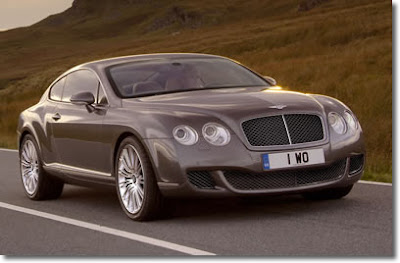
The exterior style of the new Continental GT and GT Speed models is defined by a wider, lower air intake and more upright radiator grille that also provide increased airflow to the more powerful GT Speed. Its 600 bhp W12 engine develops 15 percent more torque and nine percent more power than the standard Continental GT, while engine efficiency is optimized by the use of lower friction, lighter-weight components and a new engine management system. The resultant performance is exceptional, with a top speed of 202 mph, a zero to 60 mph sprint time of just 4.3 seconds and effortless overtaking capability.
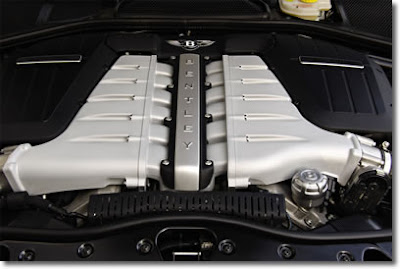
Complementing the Continental GT Speed's high performance is its unique chassis tune that delivers tauter handling and improved agility, with new, wider 9.5J 20-inch wheels and bespoke performance tires as standard fitment. Fade-resistant carbon ceramic brakes are available as an option. Subtle design touches, including a dark-tinted front grille and larger sports tailpipes, reinforce the sporting character of the Continental GT Speed.
Inspiration for the GT Speed came from the legendary 'Speed' models that first appeared in 1923. The standard Bentley 3-liter had already established Bentley's engineering superiority in terms of roadholding, handling and braking, but W.O. Bentley, the company's founder, recognized the market potential for a more potent version aimed at the enthusiast driver who demanded superior performance. His response, the 3-litre 'Speed Model', complete with twin SU carburettors and a higher compression ratio engine, became one of the most coveted of all Bentleys.
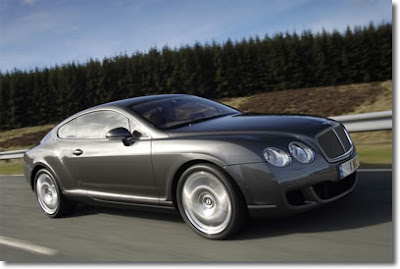
Subtle Changes to the Design
The principal changes to the frontal appearance are common to both the GT and the new GT Speed. The subtly revised front grille, now more vertical, has a more pronounced square edge accentuating the GT's distinctive Bentley profile. Beneath the grille, the all-new lower bumper design features a wider central air intake that emphasizes the sporting stance of the new models. Chromed bezels around the headlamps complement the new frontal design.
The Continental GT Speed is distinguished from the Continental GT by its dark-tinted chrome matrix grille to the main and lower air intakes. Bright chromed grilles may be specified at no extra cost. At the rear, a black lower bumper valance and wider, rifled exhaust tailpipes emphasize the GT Speed's sporting character, reinforced by new multi-spoke 20-inch sports alloy wheels. As an option, these may be specified with a dark chromed finish.
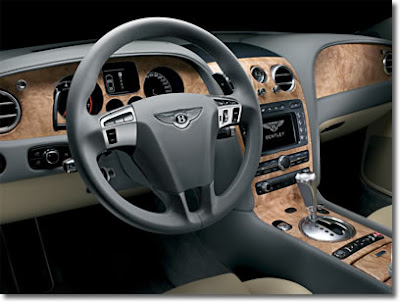 The GT Speed's cabin is based on that of the Mulliner Driving Specification (a cost option on the standard GT). It includes a choice of veneers (Burr Walnut, Dark Stained Burr Walnut and Piano Black), Diamond-quilted hide seats with embroidered Bentley emblem, indented hide headlining, a sports alloy gearlever, three-spoke multi-function sports steering wheel, drilled alloy foot-pedals as well as 'Speed' logos to the treadplates.
The GT Speed's cabin is based on that of the Mulliner Driving Specification (a cost option on the standard GT). It includes a choice of veneers (Burr Walnut, Dark Stained Burr Walnut and Piano Black), Diamond-quilted hide seats with embroidered Bentley emblem, indented hide headlining, a sports alloy gearlever, three-spoke multi-function sports steering wheel, drilled alloy foot-pedals as well as 'Speed' logos to the treadplates.
A range of Mulliner options provide further opportunities for personalization including fascia panels, header and centre console in bright aluminum or, unique to the GT Speed, dark tint aluminum (compatible only with Dark Stained Burr Walnut veneer or Piano Black veneer and single tone interior color scheme). The Continental GT also benefits from a new Bentley 'B' brake pedal.
Continental GT and GT Speed customers have a choice of 16 'standard' paint colors and 17 premium grade leather hide colors, including two new exterior paint colors (Cumbrian Green and Granite) and two new interior leather hide colors (Newmarket Tan and Cumbrian Green). Customers also have the option to select from the Arnage color palette or choose Bentley's color-matching program to produce a bespoke color of their choice.
2008 Bentley Continental GT Speed [RSportscars]
2007 Ascari A10
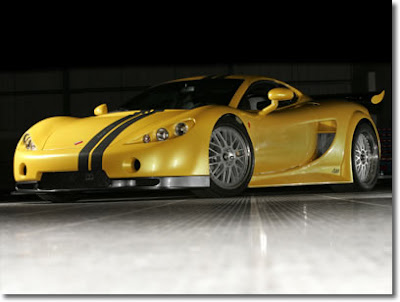
Whereas the Enzo FXX is not road legal, it was produced to be driven during track days only and costs over $1,700,000, the A10 is road legal so can be driven home and parked on your drive, to the envy of your neighbors for just $650,000.
Designed, engineered and hand built in Banbury, England the A10 has 625 bhp and weighs in at around 2645 lbs, thanks to its lightweight carbon-fiber bodywork. Reaching 60 mph in just 2.8 seconds and 100 mph in less than 6 seconds, the manufacturer claims the A10 is the fastest road going production car around a race track.
Only 10 are available and will be built to order.
The A10 is more than just a revamped KZ1, which has found success in its first year of competing in the GT3 in 2006. It has new body panels, a reworked engine and suspension, with extensive brake modifications to cope with the extra power. Lucky owners will also benefit, if they wish, from some luxuries such as remote central locking, electric windows and door mirrors, climate control and a Thatcham Category 1 alarm system.
The UK's newest supercar will make its first ever appearance at the 2006 MPH show in Birmingham, England on 28 October.
Ascari World Debut of the 625-horsepower A10
[RSportscar]
2006 Ariel Atom
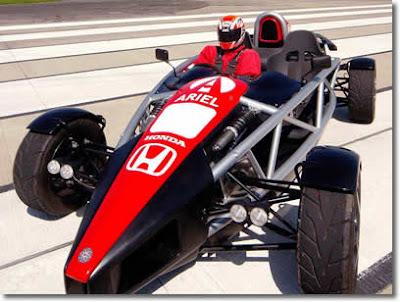
The Exposed tubular chassis puts the engineering on display. Form following function and engineering dictating aesthetics. Influenced by race cars, motorcycles and aircraft, the Atom was designed around driver and mechanical components - form following function and engineering dictating aesthetics - design with a purpose. With development from the ground up by Simon Saunders Automotive Design together with major suppliers Bilstein, Eibach, British Steel, Delphi, plus input from the country's leading engineers and journalists, the Ariel Atom has an absolutely unquestionable pedigree. Designed to the highest standard, including seat belt mounts, steering column safety, exhaust emissions and lighting.
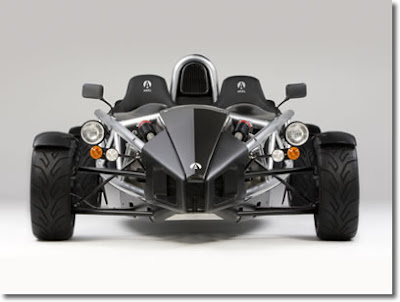 Hand built in-house by Brammo Motorsports, every chassis has a guarantee of expertise that can only come from experience and a pride in producing only the highest quality product. Made from large diameter ERW and CDS steel tube, entirely welded by hand using MIG and TIG welding, then powder coated, each Atom chassis is just the beginning of an immediately visible attention and care to detail design and quality. The chassis is a work of art in itself.
Hand built in-house by Brammo Motorsports, every chassis has a guarantee of expertise that can only come from experience and a pride in producing only the highest quality product. Made from large diameter ERW and CDS steel tube, entirely welded by hand using MIG and TIG welding, then powder coated, each Atom chassis is just the beginning of an immediately visible attention and care to detail design and quality. The chassis is a work of art in itself.
Drivetrain
Introduced in 2004 on the Saturn ION Red Line, the Ecotec 2.0L SC (supercharged) also powers the 2005 Chevrolet Cobalt SS Supercharged coupe. It is compact and lightweight, and its Eaton M62 supercharger adds 40 percent more power to the Ecotec 2.0L engine compared to a naturally aspirated version. The M62 supercharger utilizes a helical roots compressor and integral pressure control and produces a maximum of 12 psi of boost. The boosted intake flow exits into an all-new matched intake manifold with an integral air-to-liquid heat exchange intake charge cooler system.
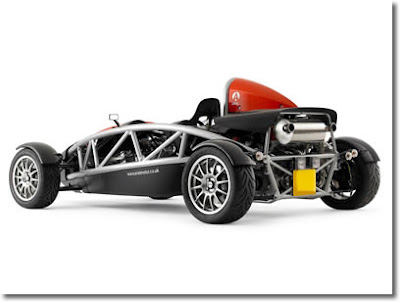
Wheels
Brammo Motorsports, the official Atom distributor in the US, offers the highest quality racing wheels on the market today for use on the Atom. They offer two aluminum wheel styles in two color options from Team Dynamics Racing along with a magnesium wheel package from Dymag in the UK.
Racing
The US built Atom is designed exclusively for racing and open track days, and performs as a true racecar should. With extensive testing at the GM Proving Grounds along with suspension tuned by Koni and engines tuned by GM Performance, the Atom is built for speed on the track.
Brammo offers customers several options to configure their car anywhere from a fun trackday car to a hardcore racing weapon. Racing features include upgraded Alcon braking package, dry sump lubrication system, magnesium wheels, and carbon fiber front and rear wings.
Already approved for open lapping and NASA HPDE events, look for updates as Brammo attempts to get the Atom homologated for competitive racing events in the US.
 Body
Body
All Atom body panels are non-structural, hand-laminated composite panels of either fiberglass (standard) or carbon fiber (upgrade). Using Formula One laminating techniques, the Atom's composite panels are of world class quality and finish. These composite panels maintain the minimalist nature of the vehicle and provide a significant weight savings over conventional production body panels manufactured in steel or aluminum. For an even further weight savings (along with the aesthetic of the weave pattern!), customers have the option of upgrading to carbon fiber body panels. Weight reduction for a carbon body panel set is around 30% over the standard fiberglass panels.
A Minimal Sports Car with Race Bred Construction RSportscar.com
2009 Alfa Romeo MiTo
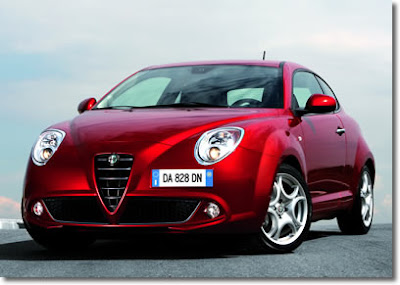
The site deliberately chosen for the car's presentation was the fairytale Castello Sforzesco in Milan where it is said that nearly 100 years ago a young designer found the inspiration for the Alfa Romeo logo when he saw a serpent carved onto the Filarete tower.
Alfa draws on its roots to launch itself into the future
Going back through Alfa Romeo's epic history means turning some of the most important pages of motoring history. It means remembering the cars, races and engines that become milestones of technological progress and the sporting events of the 20th century. Yet the Alfa Romeo story is about so much more than just steel and track, there is also a human component, essentially based on the skill of great technicians and engineers such as Merosi, Jano and Satta Puliga the meticulous creativity of designers such as Prof. Scarnati and the architect Cressoni, and also the experience of all the people on the shop floor.
These people successfully transferred the thrills that Alfa brought to racing to the roads of every day. The best spirit of Alfa Romeo is beautifully encapsulated in this statement by Orazio Satta Puliga (1910-1974), one of the brand's great designers: 'Alfa Romeo is not just a car factory: its cars are something more than automobiles built in a conventional manner. Enthusiasm for a means of transport is a kind of disease. It is a way of life, a very special way of seeing a motor vehicle. Something that defies definition. Its elements are like those irrational traits of the human spirit that cannot be explained by logic'. Today Alfa's cars are determined to carry on 'being Alfa' - and the MiTo's driving qualities, style and engineering make it the perfect vessel to convey these values to a new generation of 'Alfisti'
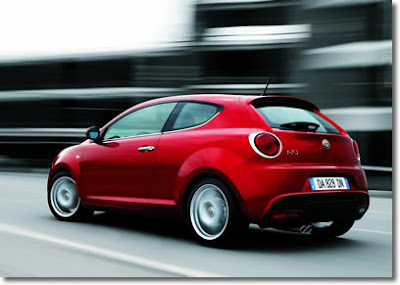
Alfa MiTo: all the Alfa values in compact form
The Alfa 8C is the technical and stylistic mould for all our cars in the future. The Alfa 8C represents all that is good about the Alfa spirit and has been an essential source of inspiration for the construction of the Alfa Romeo MiTo.
The MiTo is a distillate of pure Alfa Romeo values and came about as a result of a will to give every Alfa Romeo, however compact, a specific attitude of its own made up of sensual style, agility and technical excellence - all with the ultimate goal of driving satisfaction.
The MiTo packs all the Alfa Romeo values into 4 metres. For young people, it represents a chance to gain access their first sports car that is safe with its own distinctive style and technical content. Its dynamic attributes, good fuel economy and low emissions and petite dimensions also make the car an attractive proposition for a more adult audience, within a motoring scenario that now seems to set a premium on downsizing. The Alfa Romeo MiTo is a form of baptism into the Alfa religion for a new generation of Alfisti, opening up horizons of sportiness to the female audience that is essential to the success of any car of this category. The car offers an outstanding weight-to-power ratio, absolute manageability due to cutting-edged suspension systems and direct steering, all features present for the first time on a car of this category.
Lastly, the MiTo, like any Alfa Romeo, is a distillate of state-of-the-art engineering including very special features such as the Alfa D.N.A. system, suspension with coilover springs, Q2 Electronic and DST, all available as standard - coupled with small yet powerful turbo engines.
Alfa Romeo MiTo according to the principles of the Autonomy programme
The Alfa Romeo MiTo can be outfitted with special devices in accordance with the principles of the Autonomy programme. Fiat launched this initiative in 1995 with the aim of constructing individual and collective means of transport and services for those with reduced motor capacity, keeping pace with new product developments, and encouraging the differently able to join the world of motoring.
During the days devoted to the press presentation of the new model, a specially-equipped car will be exhibited as a significant example of the numerous available possibilities. Prepared by Handytech - one of the numerous bodybuilders that works with Fiat Group Automobiles in the sector of special equipment for assisted mobility - this Alfa Romeo MiTo is equipped with a leather-trimmed half-ring accelerator located above the steering wheel that operates totally independently of the original vehicle systems. The car is also equipped with a vertical long-armed brake lever with a brake lock and horn. Customers will also be able to appreciate the electric clutch servo: this device consists of an electric servo motor managed by an electronic control unit that simulates the features of an automatic transmission. In detail, on this example of the MiTo, the gearshift is controlled by a button on the gear lever (the system can be neutralized by a switch that restores the original clutch functions).
 Right from the launch stage, Alfa MiTo customers will therefore be able to obtain a car that best meets their requirements and needs. All these devices are easy to install and fit perfectly into the passenger compartment without impairing car user-friendliness, passenger room, comfort and safety. They can also be fitted alongside standard controls to enable the car to be driven by people without motor difficulties as well. They can also be easily removed with the advantage that the car can be sold as a specially-equipped car or a normal car. Lastly, many financial allowances are available for differently able customers.
Right from the launch stage, Alfa MiTo customers will therefore be able to obtain a car that best meets their requirements and needs. All these devices are easy to install and fit perfectly into the passenger compartment without impairing car user-friendliness, passenger room, comfort and safety. They can also be fitted alongside standard controls to enable the car to be driven by people without motor difficulties as well. They can also be easily removed with the advantage that the car can be sold as a specially-equipped car or a normal car. Lastly, many financial allowances are available for differently able customers.
Since 1995, a specific commitment with specially outfitted cars and Mobility Centres
Since 1995 - the year when the autonomy programme was set up - Fiat's belief has been that guaranteeing mobility to all is not simply a great moral and civil aim, a goal the entire community must strive for, but also a fundamental premise for economic and cultural development in present-day society.
We are no strangers to pouring commitment and energy into achieving what we feel to be the specific duty of any automotive manufacturer. In other words, to design and produce technical solutions that allow everyone the possibility of using a means of transport - whether individual and collective - without limitations of any kind.
This activity is in any case perfectly consistent with the true vocation of an enterprise that by its nature operates on the market in accordance with strictly financial considerations to meet human needs. In other words, to meet the needs of customers. And that means all customers. A specific example? In 2007, more than 11,000 Fiat Group Automobiles cars were sold in Italy in accordance with the principles of the Autonomy Programme and more than 900 people made use of the services offered by the 18 mobility centres present throughout Italy.
In our Mobility Centres, disabled people are taken through the bureaucratic, legal and technical procedures and also undergo an initial appraisal of their fitness for a special driving licence (only Medical Boards can conduct a proper assessment and issue a certificate). This is achieved through the highly sophisticated processes and instruments made available (such as the driving simulator) but above all thanks to the many physiotherapists, driving instructors and technicians who man these centres completely free of charge.
The Autonomy Programme together with the champions of today and tomorrow
We should acknowledge the commitment of the Fiat Group Autonomy Programme that aims to do away with prejudice and common misconceptions through numerous, prestigious sporting events: There is no such thing as "different" competitions but only "different" abilities because all athletes have the same will to win and overcome any obstacle. The best demonstration of this undertaking is the participation of the Fiat Group - Autonomy Programme, as Main Sponsor, in the recent "2008 Italian Disabled Ski Championships 2008", and also the fact that it was an official Partner of the 9th Winter Paralympic Games held in Turin 2006. Not to mention its sponsorship of both "Invacare World Team Cup 2008", the Wheelchair Tennis world championship to be held in Cremona, and the World Handbike Championships and European Ice Sledge Hockey Championships in 2007.
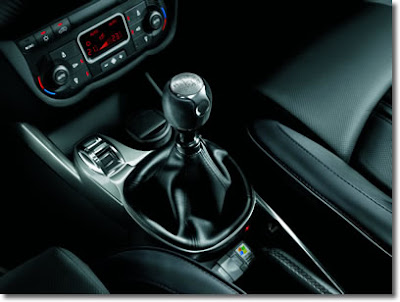 Amongst other things, the Autonomy Programme and the Alfa Romeo brand sponsored the driver Alfredo Di Cosmo who took part in the Italian Touring Championship, first division, Group N 3 reserved for 2.0 cc cars, in 2006 and 2007. The Milanese driver was the only disabled driver to register in these two difficult races and took to the track in a powerful Alfa 147 TS 16v 2.0 GR that develops a power of approximately 180 bhp with a torque curve starting at 4200 and rising to 7200 rpm, for a minimum weight of 1014 kg.
Amongst other things, the Autonomy Programme and the Alfa Romeo brand sponsored the driver Alfredo Di Cosmo who took part in the Italian Touring Championship, first division, Group N 3 reserved for 2.0 cc cars, in 2006 and 2007. The Milanese driver was the only disabled driver to register in these two difficult races and took to the track in a powerful Alfa 147 TS 16v 2.0 GR that develops a power of approximately 180 bhp with a torque curve starting at 4200 and rising to 7200 rpm, for a minimum weight of 1014 kg.
The car is also equipped with some special devices: Mechanical ring accelerator control located above the steering wheel, power-assisted ring brake located behind the steering wheel, Sadev six-speed sequential gear box with clutch activation button. The racing Alfa 147 also offers a lever-operated brakeforce distributor with 4 positions to increase or decrease the brake force on the front or rear, self-locking differential and adjustable gas shock absorber system.
Last but not least, the Fiat Group has confirmed its support for the world of sport by putting together a new team of young athletes - "Fabbrica Italiana Atleti" - who will represent Italy in the most important international sporting competitions. The ten top-level sports people who have already acted as testimonials for the Fiat Group and its business sectors include the Paralympic athletes Fabrizio Macchi for cycling and Roberto La Barbera for light athletics (the latter was selected by Coni, representing Italian athletics as one of the six testimonials of the new official uniform for Italian sport throughout the world).
Lastly, for the next two years the Autonomy Programme will back the "Freewhite Sport Disabled non-profit organization", a campaign that aims to teach differently able people how to ski and attain full independence on the snow. Introductory courses to the different types of skiing will take place on ski-runs in the Via Lattea (Milky Way) area of Italy, preferably in Sestriere, which hosted the Turin Paralympic games in 2006.
[Courtesy of Alfa Romeo, Fiat Group]
Alfa Romeo MiTo Turin, June 19th, 2008:
2009 Dodge EV Concept
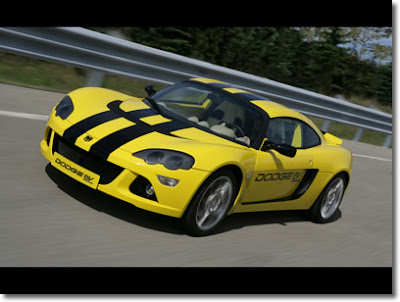
The Dodge EV sets a new standard for what can be expected in electric-drive vehicles, said Lou Rhodes, Vice President of Advance Vehicle Engineering, and President of ENVI. The electric-vehicle technology enables a fun-to-drive performance sports car and helps redefine the vision of an environmentally responsible vehicle for the Dodge brand.
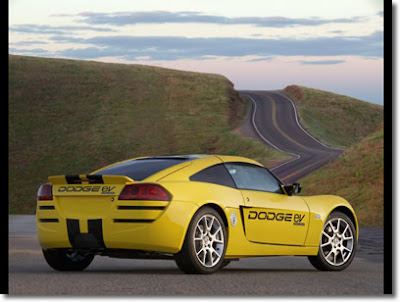 The electric-drive system consists of three primary components: a 200 kW (268 horsepower) electric motor, an advanced lithium-ion battery and an integrated power controller.
The electric-drive system consists of three primary components: a 200 kW (268 horsepower) electric motor, an advanced lithium-ion battery and an integrated power controller.
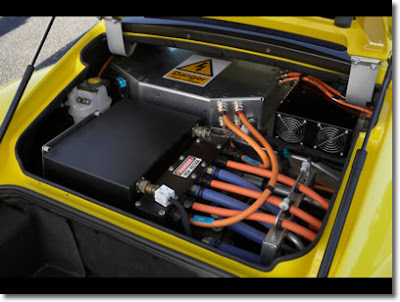 The 200 kW electric-drive motor generates 650 Nm (480 lb.-ft.) of torque. The instant high torque of the electric-drive motor delivers outstanding performance, accelerating the Dodge EV to 60 mph in less than five seconds, with quarter-mile times of 13 seconds. The Dodge EV has a top speed of more than 120 mph.
The 200 kW electric-drive motor generates 650 Nm (480 lb.-ft.) of torque. The instant high torque of the electric-drive motor delivers outstanding performance, accelerating the Dodge EV to 60 mph in less than five seconds, with quarter-mile times of 13 seconds. The Dodge EV has a top speed of more than 120 mph.
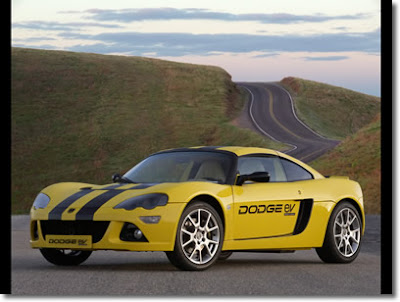 Working with the latest advanced lithium-ion battery technology, the Dodge EV has a continuous driving range of 150 to 200 miles more than triple the average daily commute of most consumers. Recharging the vehicle is a simple one-step process: plugging into a standard 110-volt household outlet for eight hours. The recharge time can be cut in half to four hours by using a typical 220-volt household appliance power outlet.
Working with the latest advanced lithium-ion battery technology, the Dodge EV has a continuous driving range of 150 to 200 miles more than triple the average daily commute of most consumers. Recharging the vehicle is a simple one-step process: plugging into a standard 110-volt household outlet for eight hours. The recharge time can be cut in half to four hours by using a typical 220-volt household appliance power outlet.
The Dodge EV offers driving enthusiasts a performance sports car that can be driven to work every day without consuming gasoline or producing tailpipe emissions.
Dodge EV Official Chrysler LLC Press Release
2009 Acura TSX
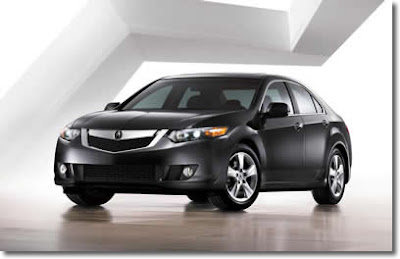
Designed and engineered to reaffirm its place as a desirable and affordable entry point for entry-premium buyers, the all-new second-generation 2009 TSX is larger, more agile, more performance minded and even "more Acura" than ever before. Carefully crafted to honor the original TSX's vision as a world-class sports sedan, the new TSX has significantly evolved to offer more comfort, convenience, driving performance and safety. It does so with expanded luxury and electronic features, a wider stance for more agile performance, and advanced safety systems.
The 2009 TSX is expected to appeal to current TSX owners, young professionals and other image seekers who will appreciate its innovative styling, technical allure and total performance - while also valuing the outstanding customer treatment that owners have come to enjoy at Acura dealerships. Extremely brand conscious and eclectic in their tastes, buyers will find the TSX as satisfying for driving colleagues to lunch as it is for weekend snowboarding trips or vacation travel.
Powertrain
An all-aluminum DOHC i-VTEC® in-line 4-cylinder engine heralds a pair of firsts for the TSX model, including dual balance shafts and a direct ignition system. Along with improved performance, it is also cleaner as it now meeting the EPA's aggressive Tier 2-Bin 5 and CARB LEV II Ultra Low Emission Vehicle (ULEV) standards for the first time in TSX history.
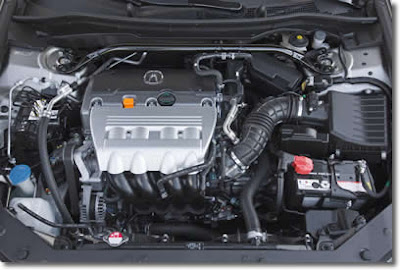
Displacing 2.4-liters and producing 201 hp and 172 lb-ft of torque (with manual transmission), the new in-line 4-cylinder engine produces its useable power across a much wider rpm range, while five percent more torque further strengthens the engine's pulling power at middle rpm levels. This allows the 2009 TSX to be more responsive off the line and out of corners, and stronger in the middle of the rpm range where the engine operates most of the time.
This newfound performance and flexibility is due in part to a higher compression ratio, revised valve timing, and improved intake and exhaust gas flow. Further credit goes to the TSX engine's i-VTEC® "intelligent" valve control system, which provides the power characteristics of a V-6 without sacrificing the light weight or fuel efficiency of an in-line four. Likewise, a new rear-mounted exhaust manifold layout, a close-coupled catalytic converter design, and a Programmed Fuel Injection (PGM-FI) system substantially reduce emissions levels. Estimated fuel mileage is 21/30/24 mpg* (city/highway/combined, 5 AT) and 20/28/23 mpg* (city/highway/combined, 6 MT).
Two transmissions are available, both as standard equipment - a 6-speed close- ratio manual with new performance-oriented ratios for Second through Sixth gears, and a Sequential SportShift 5-speed automatic with a new lock-up torque converter assembly. The manual transmission features a short-throw shifter with a precise, light action that makes it highly rewarding to use, while the Sequential SportShift automatic permits fully automatic operation with intelligent features such as Grade Logic Control and Shift Hold Control, which make driving the TSX on hilly or winding roads more enjoyable. If the driver desires, the automatic transmission can also be operated manually via new steering-wheel mounted F1®-style paddle shifters.
Body and Chassis
The 2009 TSX body structure includes two firsts for the Acura division, including a closed-channel cross-braced roof structure and inside frame rails. Along with a stronger rear bulkhead, the closed-channel cross-braced roof structure yields a more rigid and vibration-resistant structure. The first use of inside frame rails for any Acura model help tailor the aerodynamics underneath the car for improved fuel economy, lower emissions and reduced noise. In addition, new A-, B- and C-pillar separators improve the TSX's quietness over rough roads and at high speed. Slippery aerodynamics also helps fuel economy as well as high-speed stability - all while lowering emissions.
In addition to its 3.0-inch greater width and 2.6-inch wider track, the 2009 TSX has a 1.3-inch longer wheelbase and 2.4 inches more overall length. These dimensions combine to provide greater interior roominess, more agile handling and improved ride quality. Another first for Acura are the TSX's new dual-mode suspension dampers, which provide superior suspension damping characteristics at both lower and higher damper speeds. Using a unique deflector plate stack, the new dampers adjust compression damping characteristics to suit the vehicle speed, cornering forces and road surface. In creating the second-generation TSX body design, Acura designers sought to retain the crisp, dynamic design of the original and enhance it by widening the body overall and adding more muscular and distinctive cues to create a keen-edged sports sedan. Their key design goal was to create an aerodynamic design that evokes both emotion and tension with a decisively sporty flair.
Outward visibility is improved with a slimmer A-pillar design, while an auto up/down front passenger window adds convenience and a reverse-linked passenger-side door mirror tilts down to help improve safety while parallel parking. The new TSX also has a wider trunk opening and a lower trunk lift-over height for more convenient loading.
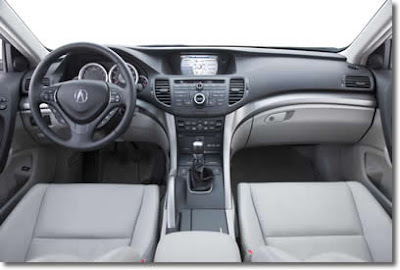
Exterior/Interior
Functionality and refinement converge with luxury and style in the interior of the 2009 Acura TSX. Featuring a blend of sweeping, contemporary shapes, a high level of standard comfort and convenience features, widespread use of premium materials and an available Technology Package, this 5-passenger sports sedan offers the upscale modern interior that customers have come to expect from Acura.
From the precision-crafted metal door sills to the satin-metal finish accents, from new leather-covered seats to the steering-wheel mounted controls, and from the premium 7-speaker sound system to the dual-zone automatic climate control, the TSX represents a merge of intelligent design and innovation. For example, Bluetooth® connectivity is standard and includes a HandsFreeLink® cellular telephone interface that makes communications easier and safer while en route.
Typical of Acura, the TSX offers an exceptional level of standard equipment. Included are a standard power passenger seat, a new folding key with remote entry, new automatic headlight activation, a premium 7-speaker sound system with CD, AM/FM/XM®, Bluetooth® HandsFreeLink® , and USB port music interface. A HomeLink® remote control system is also standard.
Adding to the already impressive list of TSX standard equipment is the available Technology Package, which bristles with leading-edge electronics that make driving much more efficient and enjoyable. These include an Acura Navigation System with Voice RecognitionTM, AcuraLink® Real-time traffic, AcuraLink® weather, and the highly useful AcuraLink® Satellite Communication System. The navigation system also features Real-time trafficTM covering 76 major metropolitan markets, and offers Traffic Rerouting with dynamic route guidance to help navigate around slow-downs. For 2009, the TSX receives a dash-mounted electronic compass for added directional information while driving.
Included in the Technology Package is a premium sound system tuned by legendary sound engineer Elliot Scheiner. This 10-speaker Acura/ELSTM Premium Surround Sound System with DVD-Audio includes a new Note function for XM® Radio that makes it easy to identify songs to recall at a later date. With push of a button, the Note function can capture 10 seconds of up to 30 songs, along with noting text indicating song title, artist name, and XM® channel.
Safety
The 2009 Acura TSX leads the way in safety with its new Advanced Compatibility EngineeringTM (ACETM) body structure. Engineered into the TSX model for the first time, ACETM improves the dispersal of frontal crash energy through the use of load-bearing frame structures that better match the TSX with other vehicles of different sizes and with different bumper heights. Simply put, ACETM helps maximize the effectiveness of the TSX's front crumple zones, better dispersing crash forces before they reach the passenger compartment.
A broad range of passive safety features likewise contributes to occupant safety, including six airbags (dual-stage, dual-threshold front airbags, new dual-chamber front seat side airbags, and side curtain airbags for outboard seating positions). Three-point seatbelts and head restraints are provided in all seating positions, and front seatbelt load limiters with an integrated automatic tensioning system further protect the TSX driver and front passenger. A new Active Headrest Restrain System is used for the first time on the TSX, while the rear seat features a Lower Anchors and Tethers for CHildren (LATCH) system that allows for the easy and secure affixing of up to two child seats. Exterior features designed to further improve safety include daytime running lights (DRL), pedestrian-injury mitigation features such as a deformable hood, hood hinges and windshield-wiper pivots, and a 5-mph front bumper and 2.5-mph rear bumper. The 2009 Acura TSX is expected to achieve the highest ratings in both government (NHTSA)** and independent (IIHS) crash testing - including garnering IIHS's TOP SAFETY PICK.
Finally, the 2009 Acura TSX is covered by a comprehensive 4-year/50,000 mile bumper-to-bumper limited warranty and a 6-year/70,000 mile powertrain limited warranty. Additional benefits of ownership include Acura Total Luxury Care® (TLC®) that provides free 24-hour roadside assistance, concierge service and trip routing.
All-New 2009 TSX to Debut at New York International Auto Show TORRANCE, Calif., U.S.A., February 11, 2008
2006 YES Roadster 3.2 Turbo
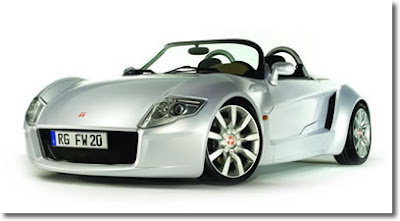
The second generation of YES! is larger and more individual than its predecessor and increases in comfort and safety leaving nothing to be desired. With the introduction of the YES! Roadster 3.2 in 2006, the Funke & Will AG in Grossenhain near Dresden/ Germany mark the start of the second generation of this unique sports car. The uncompromising vehicle was presented to the public for the first time at the international automobile show AMI in Leipzig in April of 2006. The overwhelmingly positive response from media, customers, experts and business partners reflects the great interest of the public in the puristic lightweight and proves once again the successful implementation of this concept, true to the motto: PURE DRIVING PLEASURE.
Due to the equally positive feedback from America, Funke & Will AG has extended distribution of the YES! Roadster 3.2 to North America this year. For this purpose the company has founded YES! North America Inc in 2006.

Car enthusiasts from all over the world, from New Zealand to the United States have expressed great interest in the individual two-seater with the unmistakable YES! design, as reflected by increasing sales. The design of the new YES! again shows the contours of the Stuttgart designer Oliver Schweizer. The striking features of the YES! sports car are retained in the wedge-shaped lateral contour and the racy front and rear fenders. The new generation, however, can be equipped with an optional hard top. The YES! can thus be transformed into a luxury coupe on cold days. The level of comfort was significantly raised in comparison with its predecessor. However extras such as heated seats and navigation system are available as option, because the weight of the sports car should be kept at a minimum. The interior of the new YES! was refined using high-quality materials and now, with the multi-media sound system, offers extraordinary sound enjoyment. In addition to the increased comfort, the new YES! has a longer wheel base and larger motor. The current model is equipped with a V6 Volkswagen motor. With its 255 hp, the 890 kg two-seater can accelerate to 60 m/h in just 4.8 seconds and gives you the driving pleasure typical of the YES!.
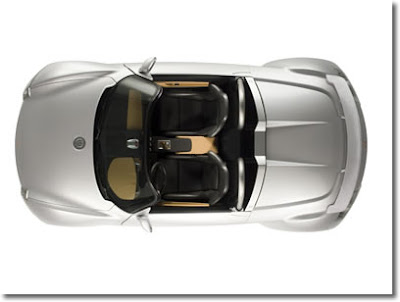
If that`s not enough for you, set your sights on the YES! Roadster 3.2 Turbo. With this turbo version, Funke & Will advance into the realm of super sports cars. Thanks to an exhaust gas turbocharger, the same original aggregate yields 355 hp, catapulting the driver of the merely 930 kg roadster to 60 m/h in just 3.8 seconds. A specially developed rear spoiler ensures the necessary contact pressure to keep the 355 hp safely on the road. The two thoroughbred sports cars with the attractive performance levels have been available since 2006 in other countries in all regions of the world such as New Zealand, Japan, Switzerland, United Kingdom, France and Spain, in addition to the local distribution partners in Germany. The domestic and international distribution network of Funke & Will AG has been continually built up and other competent partners will be added in the future. For this reason among others, the global vehicle manufacturer and DIN ISO certified engineering services provider Funke & Will AG is able to meet the high standards of YES! customers.
2007 Volkswagen GTI W12 650 Concept
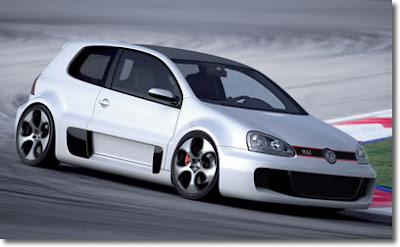
No Golf has ever been more powerful, or wider, or faster. The GTI W12 650 gives the appearance of having come directly from the racetrack. A Golf that could be the pace car for the 24 hour race at Le Mans. Its name is its mission: W12 cylinders, 650 bhp.
3.7 seconds, 202 mph, 554 lb-ft
Its 6.0-liter bi-turbo engine is longitudinally mounted directly behind the driver and front passenger. This transforms the GTI into a classic mid-engine sports car. A six-speed automatic transmission hammers the maximum torque of 554 lb-ft to the rear axle. It catapults the GTI to 62 mph in just 3.7 seconds. The speedometer needle does not pause until it reaches 202 mph. The Golf GTI W12 650 outpaces nearly all other cars of this world.
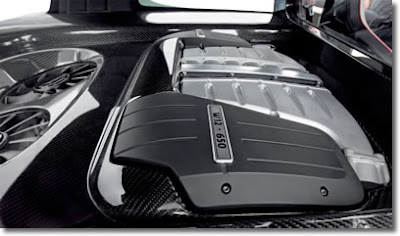
Wider than Any Other GTI
Under the broad 74 inch width and low 55.9 inch height of its body, engineers and designers have brought together automotive technologies not seen in this combination on any other car. Each component is sourced internally. That in particular is a tribute to the unequaled breadth of technology at Volkswagen AG.
The chassis components of this showcar, for example, were adapted directly from a super sports car. Mounted on the front axle are 235 tires in 19-inch format, while in the rear there are 295 tires. Naturally, alloy wheels are also used: Due to the gigantic tire dimensions, the brightly machined "Detroit" GTI wheels are "dished" in the direction of the wheel hub and are custom built; the pitch circle with the wheel nuts lies much deeper than the rim circle.
The axles were "pushed" 2.7 inches further into the body; the wheel well cutouts and gigantic wheel arches are part of the shoulder section, as in a coupe. Klaus Bischoff, Director of Volkswagen Design: "In the rear, the showcar is 3.1 inches wider on each side. However, the body of the GTI easily takes this in. We already have a strong shoulder section here on the production model. We were able to draw it outward even more distinctly, like on a sports car."
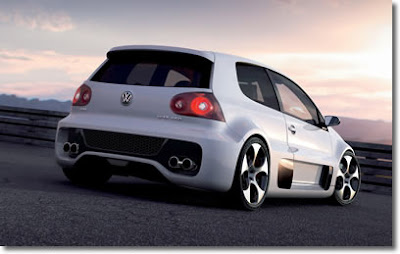
C-pillars as Part of Air Duct for Engine Cooling
"Our greatest challenge", says Klaus Bischoff, "was to provide the six-liter mid-engine with sufficient air, without watering down the GTI's side profile. In addition, provisions had to be made for sufficient downforce at the rear axle on such a fast type of car. But for aesthetic reasons we did not want to put an enormous rear spoiler on the car."
In both cases a trick helped. Klaus Bischoff: "The strongest Golf design elements are the C-pillars. But it is precisely here that we needed air ducts for engine cooling air. Therefore, the C-pillars were redesigned on short order to assume this function of routing air to the engine. In doing so, we simply made the rear windows turn inward. This created two ducts between the windows and the C pillars, on the left and right, through which air flows for engine cooling. We got the rest of the cooling air in front via the gigantic radiators and the ducts connected to them, as well as on the sides via air inlets on the side skirts." Expressed differently: At first glance all parts of the rear section look like a production GTI, but it was actually redesigned intensively.
Carbon-fiber Roof is a Diffuser
Innovative body construction has also prevented the lines of the GTI W12 650 from being ruined by a roof-mounted wing. Klaus Bischoff: "This GTI carries its wing internally. The roof is part of an enormous diffuser that supplies sufficient downforce to the rear axle. It consists of a carbon-fiber material and directs the air over and under the rear spoiler to achieve road grip, like in car racing."
The bumpers of the showcar are powerful and at the same time coherently designed. In the rear, as in the front, the GTI W12 650 is characterized by enormous air inlets and outlets. Two dual chrome-plated tailpipes frame the air outlet in the rear. At the front of the car, the eye-catching straight-line grille between the headlamps, with its red frame, is reminiscent of the first GTI.
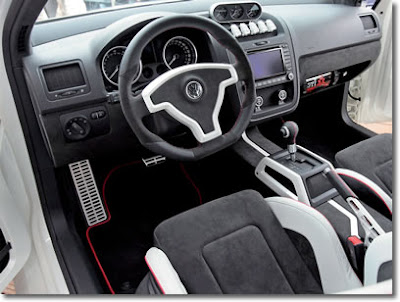
Interior with racing ambitions
Every modern-day GTI driver would feel at home right away in this interior. The leather Alcantara covers for the race car bucket seats are newly designed. Three round gauges in the middle of the instrument cluster are also reminiscent of the original GTI. Details taken from car racing, on the other hand, include the transparent "flip-up switch covers" for important functions such as ESP deactivation. To prevent accidental switch activations, the transparent covers are "flipped up" with the index finger before activating the switch underneath. Another reference to car racing is the integrated fire extinguisher in place of a glove box. For weight reasons, the door trim was completely "stripped"; only screens are used, which quite intentionally offer a view of the internal workings of the door mechanisms.
Volkswagen GTI W12 650: Bodybuilder, Born in Austria [Volkswagen News]
2009 Vauxhall Insignia Sports Tourer
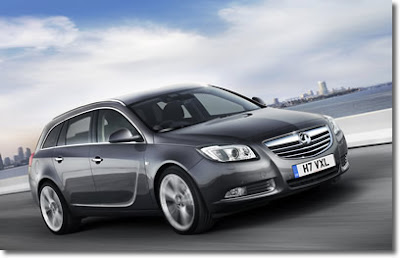
• Stand-alone estate model to join range
• Retains wheelbase and design language of hatch and saloon
• Two new engines available from launch
Luton. These are the first official shots of Vauxhall's new Insignia estate, which will debut at the Paris Salon on October 2.
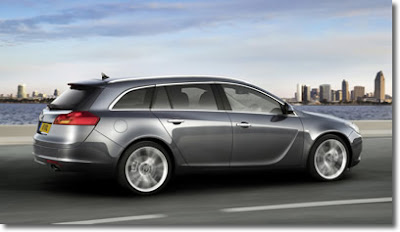 Known as the Sports Tourer, it will be available to UK buyers in the second quarter of 2009 and will feature two new engines - a more powerful turbodiesel and a smaller capacity turbocharged petrol unit - in addition to the five powerplants available from launch in the saloon and hatchback models. An ecoFLEX Sports Tourer with competitively low emissions and fuel consumption will also be available in the near future.
Known as the Sports Tourer, it will be available to UK buyers in the second quarter of 2009 and will feature two new engines - a more powerful turbodiesel and a smaller capacity turbocharged petrol unit - in addition to the five powerplants available from launch in the saloon and hatchback models. An ecoFLEX Sports Tourer with competitively low emissions and fuel consumption will also be available in the near future.
Mark Adams, Vice-President of GM Europe Design, described the Sports Tourer's design as athletic, powerful and elegant. "However," says Mark, "this is a stand-alone model and not simply an estate version of the saloon. In fact, all the bodywork aft of the B-pillars is unique to the Sports Tourer. We've also ensured that its design combines the sculptural artistry and technical precision found in the saloon and hatch models."
Designers gave the rear of the Sports Tourer a unique, yet cohesive appearance by pulling the wraparound tailgate deep in to its flanks and accentuating it with large, fully integrated tail lights.
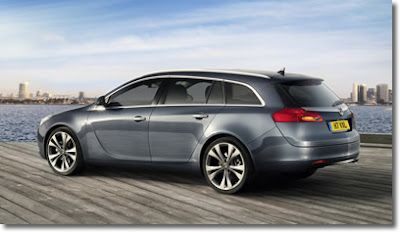 Inside, as with the Insignia saloon and hatch, the Sports Tourer has ample room for five adults and one of the best loadspace volumes in its class. (Full dimension and capacity details of the loadspace will be revealed at the Paris Auto Show in October 2008.) Despite this, Vauxhall has retained the hatch and saloon's wheelbase (2,737mm) and added around 80mm to its length.
Inside, as with the Insignia saloon and hatch, the Sports Tourer has ample room for five adults and one of the best loadspace volumes in its class. (Full dimension and capacity details of the loadspace will be revealed at the Paris Auto Show in October 2008.) Despite this, Vauxhall has retained the hatch and saloon's wheelbase (2,737mm) and added around 80mm to its length.
The new petrol and diesel engines available in the Sports Tourer will complement the Insignia's existing line up of three petrol and two diesel units, including the 130 and 160PS 2.0 CDTi which achieve 58.9mpg on the extra urban cycle, the 220PS 2.0i Turbo, and the 260PS 2.8i V6 range-topper, capable of powering the Insignia from 0-60mph in 6.7 seconds.
Like the Insignia hatch and saloon, the Sport Tourer will also be available with front- and all-wheel drive, as well as Vauxhall's FlexRide system with its Adaptive Stability Technology.
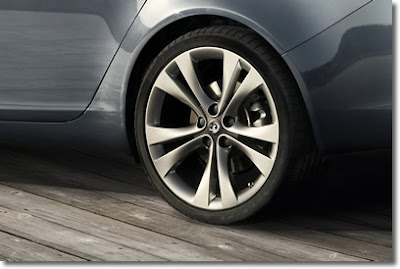 The new estate model will also benefit from the high levels of technology showcased at Insignia's launch, such as Vauxhall's latest generation Adaptive Forward Lighting (AFL), with its nine light beam settings, and the Front Camera System, which can read and memorise road signs and alert drivers if they unintentionally veer off the road.
The new estate model will also benefit from the high levels of technology showcased at Insignia's launch, such as Vauxhall's latest generation Adaptive Forward Lighting (AFL), with its nine light beam settings, and the Front Camera System, which can read and memorise road signs and alert drivers if they unintentionally veer off the road.
VAUXHALL TO REVEAL THIRD INSIGNIA VARIANT AT PARIS SHOW Vauxhall News Release
2009 Pontiac Solstice GXP
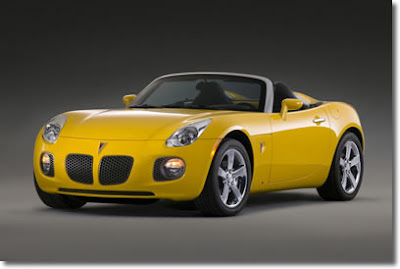
The Solstice GXP comes with a turbocharged, Ecotec 2.0-liter 4-cylinder engine rated at 260 horsepower that can be mated to either a close-ratio 5-speed manual transmission or a 5-speed automatic. Riding on a standard performance suspension using Bilstein adjustable-valve, monotube shock absorbers, the GXP features 18" polished aluminum wheels with 18" chromed wheels as an option.
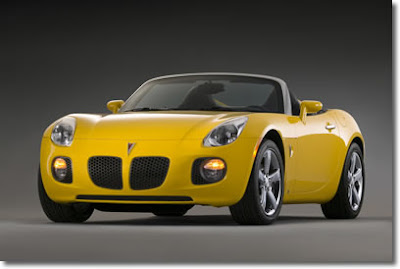
The Solstice GXP offers a wide variety of standard and optional safety equipment. GM's Onstar Services, which includes AccidentAssist, crash notification, fuel station location, hands-free calling, concierge services, turn-by-turn navigation and vehicle diagnostics, is available. In addition to Onstar, the Solstice GXP includes standard front air bags and antilock disc brakes at all four corners. GM's StabiliTrak Dynamic Control System is also standard on the Solstice GXP.
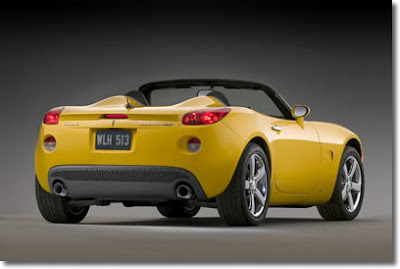
For 2008, the Solstice GXP offers two optional packages: a personal audio link that integrates an Apple iPod and a premium package that includes leather seats, 3-spoke leather-wrapped steering wheel and steering wheel accessory controls.
2008 Jaguar S-Type R
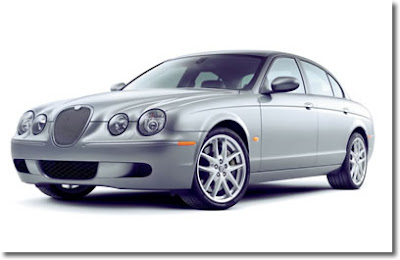
Jaguar S-Type R is equip by an ABS vented disc front brakes and powered by a supercharged V8 engine. S-Type range which comes with a host of exterior and interior design changes as well as a series of new standard and optional features.
The latest S-Type continues to be loved and admired by customers throughout the world, attracted on an emotional level by its spirit of individuality, iconic design and sporting performance.
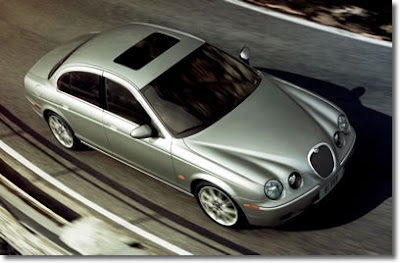
For the 2008 Model Year, all S-Type versions feature an updated front end, with the addition of the sporting S-Type R bumper and mesh grille to all models. The new-look front is more contemporary, giving every S-Type a more poised and dynamic appearance.
A new series of alloy wheels adds to the sporting appearance of the 2008 Model Year. Entry level versions now come with the multi-spoke 17-inch Antares wheel as standard. The 18-inch Triton alloy wheel is standard on all SE models, while the top-of-the-range S-Type R now comes with the 19-inch Barcelona wheel as standard.
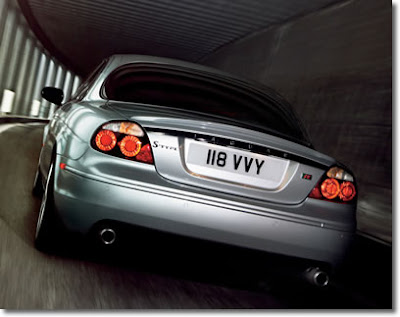
The S-Type’s interior is also upgraded, with the introduction of multi-function Sport seats (with non-perforated leather) instead of the previous Classic seat for all SE and Sport models. Entry-level S-Type models come with a leather-trimmed steering wheel as standard, while a new Satin Mahogany veneer is available as an option across the range. Choice is further extended with the option of a new Ivory and Charcoal leather color combination for SE models.
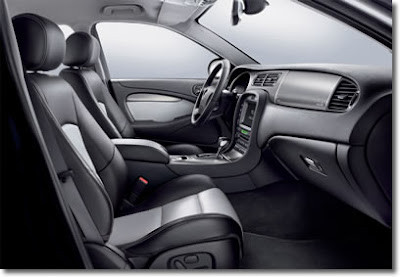
Technical innovation is part of the S-Type’s appeal and every new model will now come with Rear Park Assist as standard.
2007 Saleen Mustang Parnelli Jones LE
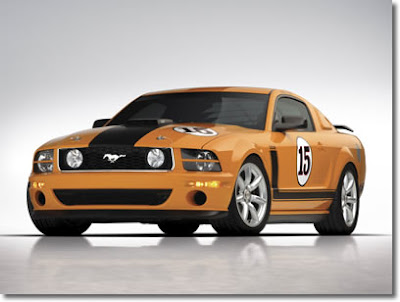
Steve Saleen, President & CEO of Saleen, said, “Parnelli Jones is an American racing icon. In the fifties, sixties, and seventies Parnelli won just about every race that he appeared in, including the Indy 500. 1970 was the year that the SCCA Trans Am Series boasted the most competitive field ever, and Parnelli Jones and his Boss 302 Mustang competed against the likes of Mark Donahue and Dan Gurney, and there he captured the championship. Our relationship began in 1987 when Parnelli raced for me on the Saleen team, and helped us win our first SCCA Manufacturer’s Championship at Sebring, Florida. I can’t think of any other individual that brings with him the unique connection between championship winning Mustangs and Saleen.”
Parnelli Jones commented, “It’s a true honor to have a special edition Saleen wearing my name. This impressive car takes me back in time – it makes me want to take it for a run around the track. I’m sure that this car will be an adrenaline-pumping experience for anyone who has the chance to own or drive one. I think that this car is going to evoke nostalgia not only for Steve Saleen and myself, but for everyone that lays their eyes on it.”
The Engine
In 1970, spectators wore bell bottom pants and mood rings and watched Parnelli in his Grabber Orange Boss 302 Mustang with black striped hood, cross the finish line to take numerous checkered flags and overall championship.
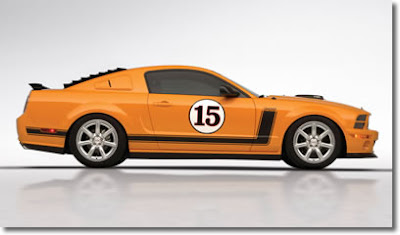 Today’s Saleen Mustang Parnelli Jones Limited Edition reflects the same authentic vintage attitude but comes complete with a new Saleen 302 cid V-8, 3-valve engine. This engine produces a whopping 370 horsepower at 6000 RPM, and with 370 ft-lb of torque at 4000 RPM.
Today’s Saleen Mustang Parnelli Jones Limited Edition reflects the same authentic vintage attitude but comes complete with a new Saleen 302 cid V-8, 3-valve engine. This engine produces a whopping 370 horsepower at 6000 RPM, and with 370 ft-lb of torque at 4000 RPM.
The high compression engine transforms a normal drive into an exciting thrill ride. Awakening the senses, the new Saleen engine is equipped with a high compression, high revving valve train, utilizing forged pistons, rods, and crankshaft and a lightweight, aluminum flywheel. Top performance calibrations are thanks to Saleen’s PowerFlash technology.
 Also included in this Limited Edition are new Saleen 302 valve covers. Completing the authenticity and providing additional high performance capabilities is the new exhaust system that provides a low- resonating sound that is a legacy of Saleen.
Also included in this Limited Edition are new Saleen 302 valve covers. Completing the authenticity and providing additional high performance capabilities is the new exhaust system that provides a low- resonating sound that is a legacy of Saleen.
Exterior Design
The new Saleen / Parnelli Jones Limited Edition comes in one color, Grabber Orange. Period correct details include a black striped “shaker” hood, race-style hood pins, black trunk deck, and 302 side stripes.
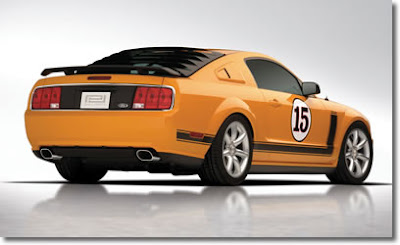 Completing the overall effect, the new Limited Edition comes with Saleen performance styling including front fascia with racing-style air dam, side skirts, rear fascia, rear 1970 replica wing, trunk insert license plate panel with chrome trim, rear window quarter panels, and a racing-style billet gas cap. Demonstrating further the authenticity of this retro-beauty, Parnelli’s racing number, 15, removable and reusable static cling race decals, and the Ford blue oval are displayed – just like the one that appeared on Parnelli’s 1970 Boss 302 Mustang.
Completing the overall effect, the new Limited Edition comes with Saleen performance styling including front fascia with racing-style air dam, side skirts, rear fascia, rear 1970 replica wing, trunk insert license plate panel with chrome trim, rear window quarter panels, and a racing-style billet gas cap. Demonstrating further the authenticity of this retro-beauty, Parnelli’s racing number, 15, removable and reusable static cling race decals, and the Ford blue oval are displayed – just like the one that appeared on Parnelli’s 1970 Boss 302 Mustang.
Only 500 Examples Will be Produced
“Parnelli Jones is an extraordinary example of a legend maker. Even after nearly four decades, his abilities and visions for the sport has very few equals. I anticipate that Parnelli’s racing spirit will come alive in every Saleen / Parnelli Jones Limited Edition that we manufacture. Capping on our motto, ‘Power in the Hands of a Few,’ we will produce a limited number – up to only 500 – in honor of Parnelli winning the Indy 500 in 1963,” said Steve Saleen.
Availability and Pricing
Certified Saleen Ford dealers throughout the United States are now taking orders for the Saleen Parnelli Jones Limited Edition that will be distributed this Fall as a 2007 model. MSRP is estimated to be in the mid-to-high $50,000 for this limited production vehicle. Taxes, designation charges, and other fees may apply.
Saleen Press Release
2008 Porsche GT3 Cup S
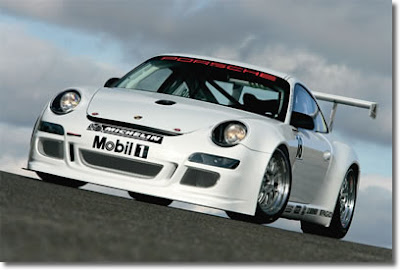
To a large extent, the 3.6-liter boxer engine is identical to the power unit used in the Porsche Mobil1 Supercup and the international Carrera Cup championships. Power output has increased by 25 horsepower to now 440 bhp at 8,000 rpm. Maximum torque is up by 17 lb-ft to 317 at 7,250 revs per minute. The power increase results from optimized engine electronics and a modified exhaust system.
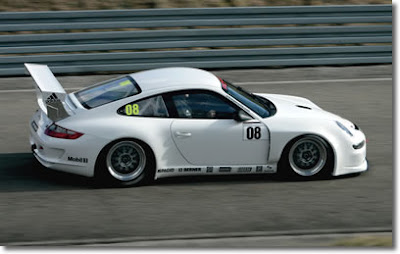 In contrast to the GT3 Cup, the body of the Cup S is not based on the road-going GT3 but on the GT3 RS. In the wider wheel arches, considerably larger wheels can now be mounted. At the front, the rims measure 10.5 inches in width with 12 inch wheels fitted at the rear. The front section and flares are significantly different to the GT3 Cup components. An adjustable front-splitter generates more downforce at the front axle. The rear-wing is wider and positioned higher than the Cup version and provides more downforce at the rear axle.
In contrast to the GT3 Cup, the body of the Cup S is not based on the road-going GT3 but on the GT3 RS. In the wider wheel arches, considerably larger wheels can now be mounted. At the front, the rims measure 10.5 inches in width with 12 inch wheels fitted at the rear. The front section and flares are significantly different to the GT3 Cup components. An adjustable front-splitter generates more downforce at the front axle. The rear-wing is wider and positioned higher than the Cup version and provides more downforce at the rear axle.
 Several suspension components for the GT3 Cup S have been taken from the more powerful GT3 RSR which races in the GT2 class at international long-distance championships. The braking system of the GT3 Cup S was adjusted to the increased power compared to the GT3 Cup. At the rear the diameter of the brake discs has grown by five millimeters to now measure 355mm.
Several suspension components for the GT3 Cup S have been taken from the more powerful GT3 RSR which races in the GT2 class at international long-distance championships. The braking system of the GT3 Cup S was adjusted to the increased power compared to the GT3 Cup. At the rear the diameter of the brake discs has grown by five millimeters to now measure 355mm.

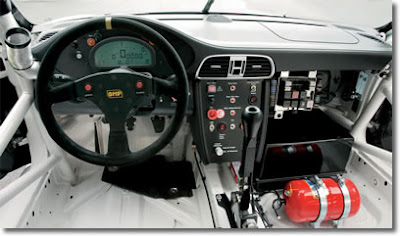
The new GT3 Cup S costs 250,000 Euro plus national VAT and is scheduled for delivery to customer teams from April. Additionally, Porsche offers a kit to upgrade the 2007 Cup models to the GT3 Cup S standard.
2009 Mazda MX-5
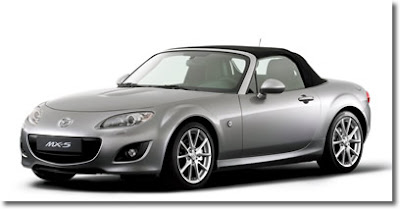 Evolution focused on pure Jinba Ittai Enjoyment
Evolution focused on pure Jinba Ittai Enjoyment
The facelift MX-5 embodies the purest form of Zoom-Zoom. With evolved sensory qualities, it continues to deliver the unchanging value of "Jinba-Ittai" (oneness between driver and car) despite the changing world. Marking its 20th anniversary next year, the new MX-5 offers a "lots of fun" driving experience underpinned by the untiring passion of Mazda's engineers since 1989.
Updates at a Glance
Newly evolved look that's functional and instantly recognizable, as Mazda, and as MX-5
• Exterior styling with greater dynamism & athleticism, which contributes to superior aerodynamics
• Strongly emphasized a premium identity in the look and feel of the Roadster Coupe
Enhanced engineering to enable the driver to enjoy the full potential of the engine performance
• 500 rpm higher rev limit and the raised engine speed at max power
• Introduced a forged crankshaft, fully floating pistons and newly designed valve springs
Sportier engine sound that responds more crisply to accelerator inputs
• Surge tank rigidity optimization, new forged crankshaft and ISE , Induction Sound Enhancer (for 6MT)
Smoother shifting feel with brisk and high-quality steering feel
• With 6MT, the meshing surfaces of the 1st–4th triple-cone synchronizers are now carbon coated, and the 3rd–4th synchronizer diameter has been increased.
• Linear & sporty 6AT that's newly available for Europe incorporates two new control technologies, Direct Activematic (DAM) and Active Adaptive Shift (AAS).
• A lower front roll centre and retuned suspension make the car's response to steering inputs more linear and enable the driver to precisely trace desired lines. The yaw and roll also feel more natural, producing a higher-quality ride
Improved quietness
• Roadster Coupe cockpit road noise with the roof closed is 2.1dB lower than before. Improvements include urethane filling in the front suspension member and damping material in the front roof section.
• Quietness is further promoted in the Roadster Coupe and soft-top version by stiffer door modules and by newly added reinforcements on the No. 2 crossmember.
Environmental, safety and conformability
• More convenient features, ie., improved Bose®sound system, 5 step adjustable seat heater, etc.
• Average fuel consumption display and outside air temperature is equipped
• More models featuring DSC as standard equipment
All information in this press copy is based on the specifications of the freshened Mazda MX-5 at the time of writing. Mazda's product development is ongoing, so certain details of the vehicle may change. For confirmation, please contact the nearest Mazda public relations representative.
At the 2008 Paris Motor Show, Mazda is unveiling the freshened Mazda MX-5 and Mazda MX-5 Roadster Coupe.* Both versions of the facelifted MX-5 been reined for an even purer experience of Jinba Ittai - the unique feeling of oneness between driver and car that has distinguished the MX-5 since its inception.
Since launching the first-generation MX-5 in 1989, Mazda has stuck to the concept that driving enjoyment is the key value offered by the MX-5. Through two full redesigns and countless improvements, we've continued to heighten and improve the MX-5's Jinba Ittai- focused "lots of fun" character. We expanded the MX-5's appeal to an even broader audience in 2006 with the launch of the MX-5 Roadster Coupe. As demands for safety and environmental compatibility have grown amid major changes in the automotive environment, we've continued to incorporate new technologies and innovations without compromising the MX-5's inherent lightness.
*The version with a retractable hard top has various names according to market. In Europe, it's called the Mazda MX-5 Roadster Coupe. In North America, it's called the Mazda MX-5 Power Retractable Hard Top. And in Japan, it's called the Mazda Roadster Power Retractable Hard Top.
With the latest MX-5 facelift, Mazda engineers set out to combine an enhanced Jinba Ittai feeling with revisions that would further cement the MX-5's reputation as the most enjoyable lightweight two-seat sports car in the world. The designers retained the well- known friendly facial expression while incorporating elements of Mazda's latest design themes for a dynamic, athletic look that embodies the MX-5's function and purpose as a sports car. With the Roadster Coupe, they strongly emphasized a premium identity in the look and feel of the body and cabin.
With regard to dynamic performance, the engineers enhanced characteristics that appeal to the emotions yet cannot be expressed in terms of catalogue specifications. For example, they optimized the engine potential for greater enjoyment, created a sportier engine sound that responds more crisply to accelerator inputs, and realized a brisk, high-quality steering feel that gives a more linear response to movements of the steering wheel. And at the same time, they enhanced the MX-5 in terms of comfort, convenience, fuel economy, and safety.
MX-5 Programme Manager Takao Kijima says: "Although the kind of driving experience that people find enjoyable in a lightweight sports car never really changes, maintaining it in a vehicle that must also meet the continually changing demands of society is a daily challenge for Mazda engineers, and a particularly vital mission with the MX-5. Speaking as the engineer in charge of MX-5 development, I'm convinced that the MX-5 is-and will remain-more enjoyable than any competing car. I'm delighted that the new MX-5 and the newly evolved Jinba Ittai fun that it offers will soon be thrilling customers who already embrace the MX-5 philosophy, and those who are about to encounter the MX-5 for the first time."
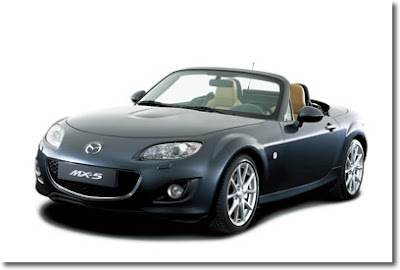
Heritage : Worldwide Acclaim and More than 850,000 Units of Production
The MX-5 has enjoyed worldwide popularity since its first-generation debut in 1989. Indeed, it is recognized by Guinness World Records as the world's highest-selling two-seat convertible sports car in history. Since the launch of the third-generation model, the MX-5 has won more than 175 accolades including the 2005–2006 Japan Car of the Year award; Wheels magazine's 2005 Car of the Year award; Top Gear magazine's Roadster of the Year 2005 award; a place in Car and Driver magazine's 2006 Ten Best Cars list; and selection by Consumer Reports as the best 2008 car in the "fun to drive" category. Aggregate MX-5 production stood at 852,682 units at the end of July 2008, which looks set to be recognized again by Guinness World Records as the highest-ever production volume for a two-seat convertible sports car.
MX-5's "Lots of Fun" Character
The "lots of fun" character conceived by Mazda for the MX-5 encompasses several kinds of fun: the fun of driving it, the fun of seeing its great styling, the fun of personalizing it, the fun of using it to get together with friends, and the fun of owning and using the MX-5 on a day-to-day basis. And underpinning this "lots of fun" character is the feeling that Mazda calls Jinba Ittai. In developing the third-generation MX-5, Mazda engineers clearly defined Jinba Ittai by creating a fishbone chart with six categories (styling, touching, listening, driving, cornering, and braking) which were then broken down into individual attributes. With reference to the fishbone chart, they then used techniques based on Mazda's unique philosophy of Kansei engineering to conduct development with a focus on enjoyment, beauty, and emotional attachment (values that can't be measured in numerical terms). With the latest facelift, all members of the development team used the fishbone chart again as a way to keep their goals consistent while evolving the MX-5 to meet new social demands and customer expectations.
An Uncompromising Focus on Lightness
In the third-generation MX-5's development, Mazda engineers pursued the 'gram' strategy (a programme of weight minimizationon a component-by-component basis), used cutting-edge technologies to make the body light and rigid, and adopted materials that were stronger and lighter than those used in the second-generation MX-5. As a result, they were able to limit the overall weight increase to just 10 kg (22 lb) and enhance performance at the same time. With the latest facelift, the development team adopted new mechanicals and equipment throughout the MX-5 but again kept the overall weight increase to an absolute minimum. The MX-5's ideal 50:50 front/rear weight distribution and the reduced yaw-inertia moment achieved by Mazda with the third-generation MX-5 are totally uncompromised.
Design
A Newly Evolved Look that's Functional and Instantly Recognizable
Design and craftsmanship, which are encompassed, respectively, by the "styling" and "touching" categories in the fishbone chart, are particularly crucial to a sports car since they're the main source of the car's "fun to own" and "fun to use" characteristics. They must complement and underpin the car's functionality. With the latest MX-5 facelift, the development team incorporated elements of Mazda's newest design themes while carefully carrying forward the simple and instantly recognizable personality that Mazda established with the first-generation MX-5. The updated exterior styling reflects an evolution toward greater dynamism and athleticism, and it contributes to superior aerodynamic performance. The updated interior design realizes significantly enhanced quality and a more functional, driver-friendly sports-car cockpit.
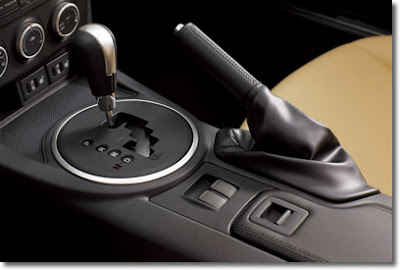
Exterior Design: A Fusion of New Mazda Elements and an Unmistakable MX-5 Look
The front grille has been enlarged and changed from an oval shape to the five-point grille that forms part of the well-known Mazda family face. Combined with tautly styled headlights and lowing fog- lamp bezels, the new grille creates a reined and athletic expression. To preserve the character that has always been a hallmark of the MX-5, the five points of the grille are slightly rounded. Also, the new shape of the front bumper, with corners that extend downwards, enhances the dynamic look and improves the aerodynamics.
Viewed from the side, newly designed side sills form a character line that lows to the rear bumper in a way that emphasizes speed and stability. The reshaped side sills deflect air away from the rear wheels, and thereby contribute to superior aerodynamic performance.
The rear bumper has a new design that makes the rear look wider, sportier, and more integrated into the body. The rear combination lamps inherit the traditional MX-5 elliptical motif, and protrude further outboard for greater aerodynamic efficiency.
The Roadster Coupe's more Upscale Identity
The MX-5 Roadster Coupe, which features a groundbreaking powered roof system, also incorporates several design changes that further emphasize its more upscale identity and distinguish it from the soft-top version.
• Front grille: Whereas the soft-top version has a in-type grille, the Roadster Coupe has a mesh grille that is framed by a chrome ring.
• Headlamp inner bezels: The headlamp inner bezels are painted silver on the soft-top version, but have a chrome finish on the Roadster Coupe. • Fog-lamp inner bezels: The fog lamp inner bezels are black on the soft-top version, but are painted silver on the Roadster Coupe.
• Outer door handles: The outer door handles are body-coloured on the soft-top version, but have a chrome finish on the Roadster Coupe.
• High-mounted stop lamp: The high-mounted stop lamp has a red lens on the soft-top version, but a clear lens on the Roadster Coupe.
New Wheel Designs
The MX-5 is available with 16-inch and 17-inch aluminium wheels. The 16-inch wheels have five sets of twin spokes for a lightweight look. The 17-inch wheels have 10 twisted spokes for a stronger impression of power and dynamism.
Interior Design: Higher Than Ever Quality and Driver- Friendliness
The interior design delivers the MX-5's traditional combination of comfortable snugness below shoulder level and openness above shoulder level. It also reflects customer feedback in the form of enhanced quality and driver-friendly features.
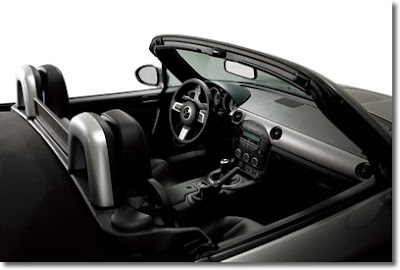 The decorative surfaces on the instrument panel have been changed from glossy piano black to dark silver, which has a subtler, higher- quality look befitting a sports car. The meters have new graphics for higher legibility. The climate-control dials on the centre stack have each been given a silver-coloured ring for a higher-quality look. A protrusion has been eliminated from the outer surface of each door pocket to create more leg space. And the door and centre-console armrests have each been given a soft pad for a better feel.
The decorative surfaces on the instrument panel have been changed from glossy piano black to dark silver, which has a subtler, higher- quality look befitting a sports car. The meters have new graphics for higher legibility. The climate-control dials on the centre stack have each been given a silver-coloured ring for a higher-quality look. A protrusion has been eliminated from the outer surface of each door pocket to create more leg space. And the door and centre-console armrests have each been given a soft pad for a better feel.
Recaro seats designed exclusively for the MX-5 are available in certain regions. They are upholstered in leather and perforated Alcantara® for a sporty look, and they combine excellent support with easy ingress and egress.
Colour Variations
The MX-5 for Europe has a lineup of seven body colours including two new choices: Aluminium Metallic (a mix of sportiness and refinement) and Metropolitan Grey Mica. The soft top is black. Non- Recaro seats in the MX-5 for Europe are upholstered with black fabric or with black or Dune Beige (not available in Europe) leather depending on grade. The leather and perforated Alcantara* on the Recaro seats have a black-based two-tone colour scheme. The full lineup of body colours is as follows:
• Aluminium Metallic (new)
• Metropolitan Grey Mica (new)
• Sunflower Yellow (new; not available in Europe)
• Copper Red Mica
• Stormy Blue Mica
• True Red
• Brilliant Black
• Marble White (soft-top version only)
Dynamic Performance
Evolved Jinba Ittai for Enhanced Fun-To-Drive
The Jinba Ittai feeling on which Mazda has always focused with the MX-5 defines the kind of spontaneous car-and-driver interaction that anyone can experience whether they're driving the MX-5 in town, on twisty roads, or on an open highway. With the latest facelift, Mazda engineers evolved the attributes in the "driving", "cornering", "braking", and "listening" categories in the fishbone chart to realize performance that lets drivers enjoy the feeling of oneness with the car to an even greater degree.
*Alcantara® is a Registered Trademark owned by Alcantara S.p.A
A 500 rpm Higher Rev Limit Maximizes Engine Potential for Greater Enjoyment
The powertrain has been enhanced to enable the driver to enjoy the full potential of the engine's performance (a key "fun to drive" aspect of the MX-5). Specifically, the speed at which the engine delivers maximum power has been raised from 6,700 rpm to 7,000 rpm (2.0-litre M/T version) and the rev limit has been raised from 7,000 rpm to 7,500 rpm (all 2.0-litre versions). Without these enhancements, the engine feels smooth and linear right up to the rev limit, even with the throttle wide open. With them, however, the driver can really experience the sensation of extracting every single horsepower out of the engine (the enhancements described here apply to the 2.0-litre grades with a manual transmission). The crucial 500 rpm increase in the rev limit is enabled by greater precision in the engine, namely: a forged crankshaft (this ensures the required rigidity at high engine speeds), fully floating pistons and newly designed valve springs.
A Sportier Engine Sound that Responds More Crisply to Accelerator Inputs
The engine sound (a key element in the "listening" category of the MX-5 fishbone chart) is a big part of the sports car experience. With the latest facelift, Mazda engineers made the MX-5 engine sound even better without causing aural discomfort for people outside the car. Notably, they increased the rigidity of the plastic surge tank in the intake manifold. The optimized surge tank combines with the new forged crankshaft to realize a clearer engine sound throughout the rev range. In vehicles with the six-speed manual transmission, the engineers also adopted a newly developed device called an Induction Sound Enhancer (ISE). This amplifies the pulses that occur when an accelerator input opens the throttle valve to increase air low into the engine, thereby delivering a more exciting sound to the cockpit. The intake sound created by the ISE feels synchronized with the driver's accelerator inputs, so the driver enjoys a crisp, thrilling engine sound even when using the accelerator pedal gently to adjust the revs for a downshift.
Newly Evolved and Reined Transmissions
With the six-speed manual transmission, the meshing surfaces of the 1st–4th triple-cone synchronizers are now carbon coated, and the 3rd–4th synchronizer diameter has been increased. These improvements enable smoother shifts up to the engine's heightened rev limit of 7,500 rpm.
A six-speed Activematic automatic transmission that's newly available with the MX-5 for Europe incorporates two new control technologies. One is Direct Activematic (DAM), which allows the driver to quickly change gears using paddles on the steering wheel while still driving in the "D" range. It was developed to enable quick downshifts for three common situations: decelerating using engine braking on a downhill road; accelerating after decelerating into a corner; and overtaking another vehicle. (The driver does not need to select the "M" range before shifting down.) Since Direct Activematic enables engine braking and acceleration more quickly and easily, it makes driving easier and more fun. The other new technology is Active Adaptive Shift (AAS), by means of which the transmission control system evaluates the driving situation from factors such as the road's gradient and twistiness and the accelerator and brake inputs. When the system recognizes enthusiastic driving, it actively promotes upshifts and downshifts to realize a linear and sporty response that matches the driver's intentions.
Handling that Further Heightens the Jinba Ittai Feeling
The MX-5 development team also heightened the Jinba Ittai feeling by comprehensively reining attributes in the category that's called "cornering" on the fishbone chart. A key refinement was made to the front suspension knuckles. The ball joints' vertical pivot position was changed to reduce the height of the front roll centre by 26 mm. This decreased fluctuations in the vertical loading on the outer wheel during cornering manoeuvres. Consequently, roll movements caused by steering inputs feel more natural and the car's response to steering inputs is more linear. In combination with newly tuned suspension components, the revision improves the Jinba Ittai steering feel whereby the driver can precisely trace desired lines. It also realizes a higher-quality ride by making the yaw and roll feel more natural.
An Athletic Design that Heightens Aerodynamic Performance
To improve handling stability, quietness, and high-speed fuel economy, the MX-5 development team drew on Mazda's expertise in incorporating aerodynamic improvements into styling that's faithful to a design theme. The main aerodynamic improvements are as follows:
• air guides that protrude downward from the left and right corners of the front bumper
• specification vehicles, except some specific markets)
• protruding rear combination lamps
• wider front tyre deflectors
As a result of these improvements, both the soft-top version and Roadster Coupe have top class aerodynamics for their class.
Comfort and Utility
A Quieter Ride in the Roadster Coupe
Given the Roadster Coupe's more upscale positioning, the development team produced a quieter ride by reducing wheel resonance and adding damping and sound-insulating materials, such as urethane filling in the front suspension crossmember and damping material in the front part of the roof. Thanks to these improvements, road noise in the cockpit on a coarse road surface with the roof closed is 2.1dB lower than before. Quietness is further promoted in the Roadster Coupe and soft-top version by stiffer door modules and by newly added reinforcements on the No. 2 crossmember.
New Equipment for Comfort and Convenience
• Bose® sound system (optional): New features such as a six channel equalizer (with separate channels for the woofers and the door-mounted mid-to-high frequency speakers) achieve clearer, more dynamic sound reproduction.
• AUX jack: Third-party audio devices can be connected to the car's audio system. There is also a 12V power socket.
• Bluetooth telephone system (optional): Hands-free communication is possible without even having to physically plug in Bluetooth-capable mobile telephones. The driver can make and accept calls using voice commands or controls mounted on the steering wheel.
• Improved seat heaters (optional): Shorter warmup times are complemented by five levels of adjustability (as opposed to the previous on/off control) for greater comfort.
• Storage for small items: The divider that forms cupholders in the centre-console can be removed to create a handy box for small items. There is also a net pocket on each door.
Ecology and Safety
Enhanced Environmental Performance for Greater Enjoyment
Mazda regards efforts to reduce fuel economy and exhaust emissions not only as a vital way to protect the environment but also as a way to make sports cars more fun to drive.
With the latest MX-5 facelift, Mazda engineers addressed fuel economy by reducing the rolling resistance of the tyres, reducing engine friction, and revising the transmission gear ratios. Lower exhaust emissions were achieved through upgraded precious metals in the catalytic converter. The MX-5's improved emission performance complies with Japan's SU-LEV standard, the European Union's Stage 4 standard, and the United States' ULEV2 standard.
To promote eco-driving, the digital display on the instrument panel can show the average fuel consumption (The display can be toggled between average fuel consumption, a double tripmeter, and the outside air temperature.)
Rigorous Attention to Safety
Improved active safety on the European MX-5 is realized by expanded availability of a tyre pressure monitoring system and by more models featuring Dynamic Stability Control as standard equipment. The MX-5 facelift will be introduced on the European market in early spring 2009.
The Freshened Mazda MX-5
Official Mazda Press Release
2009 Mazda 6
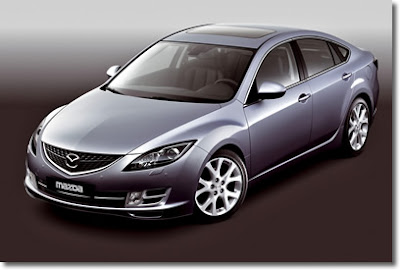 Specifically developed for North America, the all-new Mazda6 inherits and evolves the sporty styling and superb driving performance of the first generation Mazda6. The North American model features a larger body and greater engine displacement to meet the particular demands of the North American market. Handling and comfort were also optimized for North American road conditions.
Specifically developed for North America, the all-new Mazda6 inherits and evolves the sporty styling and superb driving performance of the first generation Mazda6. The North American model features a larger body and greater engine displacement to meet the particular demands of the North American market. Handling and comfort were also optimized for North American road conditions.
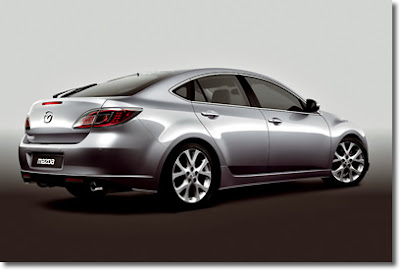 "Following the CX-7 and the CX-9, the 2009 North American Mazda6 is the third model that was designed and engineered specifically to meet the needs of our North American customers," said Daniel T. Morris, Mazda's senior managing executive officer in charge of marketing and overseas sales. "The midsize sedan segment is extremely competitive and the Mazda6 will be up against some of the best vehicles in the industry.
"Following the CX-7 and the CX-9, the 2009 North American Mazda6 is the third model that was designed and engineered specifically to meet the needs of our North American customers," said Daniel T. Morris, Mazda's senior managing executive officer in charge of marketing and overseas sales. "The midsize sedan segment is extremely competitive and the Mazda6 will be up against some of the best vehicles in the industry.
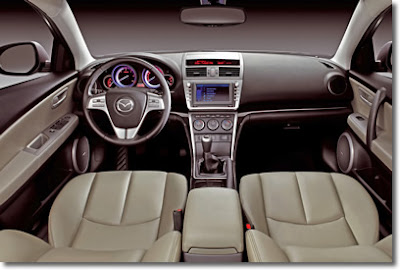 "The all-new Mazda6 offers plenty of Mazda's characteristic Zoom-Zoom vitality and we believe it will succeed in the challenging North American market. We will continue to deliver products that reflect our customers' needs and build Mazda's brand image in order to achieve the goals set out in our mid-term Mazda Advancement Plan."
"The all-new Mazda6 offers plenty of Mazda's characteristic Zoom-Zoom vitality and we believe it will succeed in the challenging North American market. We will continue to deliver products that reflect our customers' needs and build Mazda's brand image in order to achieve the goals set out in our mid-term Mazda Advancement Plan."
The all-new North American Mazda6 will be powered by Mazda's newly developed 2.5-liter inline four-cylinder (I4) engine and its 3.7-liter V6 engine. The I4 engine is already available in the European and Japanese Mazda6 models and the V6 promises an exhilarating ride, coming straight from the 2008 North American Truck of the Year, the Mazda CX-9. A six-speed manual and a five-speed automatic transmission with manual-shift mode will be available for the I4 engine. The V6 will be coupled to a six-speed automatic transmission with manual-shift mode. The North American Mazda6 will be available only as a four-door sedan.
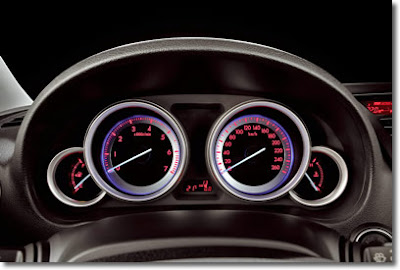 The all-new North American Mazda6 will be produced at AutoAlliance International in Flat Rock, Michigan, a joint venture with partner Ford Motor Company, as it has been since the first Mazda6 launched in 2002.
The all-new North American Mazda6 will be produced at AutoAlliance International in Flat Rock, Michigan, a joint venture with partner Ford Motor Company, as it has been since the first Mazda6 launched in 2002.
Headquartered in Irvine, Calif., Mazda North American Operations oversees the sales, marketing, parts and customer service support of Mazda vehicles in the United States, Canada and Mexico. Operations in Canada are managed by Mazda Canada, Inc., located in Ontario, Canada, and in Mexico by Mazda Motor de Mexico in Mexico City.
Mazda Reveals the All-New Mazda6 for the North American Market
[Courtesy Mazda Press Release]
- Designed and engineered specifically for North American customers -HIROSHIMA, Japan-Mazda North American Operations (MNAO) today revealed the all-new Mazda6 and confirmed that sales will start in late summer 2008.
2009 Mitsubishi Galant Fortis Ralliart
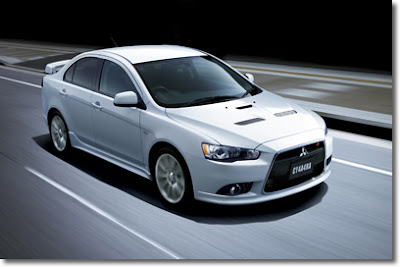
Launched in August 2007 Galant Fortis was MMC's first new sedan model in seven years. It has been well received by customers looking principally for everyday utility plus a taste of sporty performance, while the Lancer Evolution X finds favor with those drivers looking to enjoy a serious sport driving experience, participation in motorsport events included. The new Galant Fortis RALLIART strikes an excellent balance between everyday driving comfort and fun-to-drive dynamic performance and as such will meet the needs and demands of a wide spectrum of customers.
Product walkaround
1. Exterior
* The car features a unique front bumper designed to reduce air resistance. Increasing the size of the "jet-fighter" grille, an element of the MMC sedan design identity, both improves engine cooling and with the chrome treatment of its perimeter enhances the premium look to the car. The bottom edge of the bumper is designed as an air dam for improved handling and vehicle stability at higher speeds.
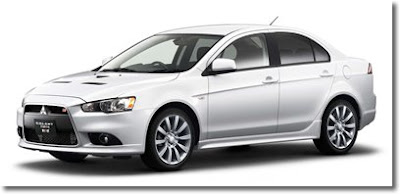
* The engine hood uses a lightweight aluminum panel with an air scoop to feed the turbocharger; twin air outlets discharge heat from the engine compartment. * The unique rear bumper accommodates twin tail pipes. The bumper's design enhances airflow control and contributes to better straight-line stability at higher speeds. * The factory-fitted option rear decklid wing-spoiler generates effective downforce. * The grille and trunk lid carry the RALLIART emblem.
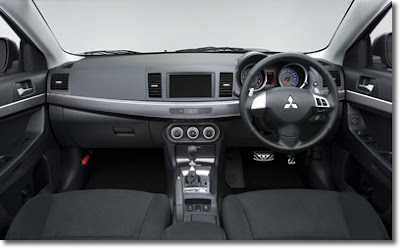
2. Interior
* The interior uses an elegant deep black color scheme while the dashboard features an ornamentation panel comprising a geometric check pattern and silver pin beading that adds a mechanical taste and gives the cockpit a sporty, high-quality appearance.
* The unique instrument cluster dials use matte black faces with white high-contrast graphics for excellent legibility.
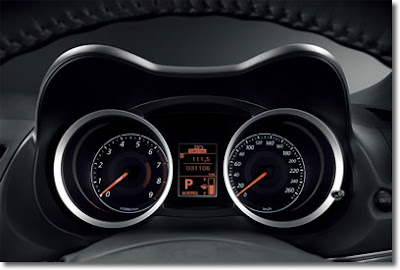 * The steering wheel and shifter knob are wrapped in luxurious genuine leather. The aluminum accelerator and brake pedals are fitted with non-slip rubber strips.
* The steering wheel and shifter knob are wrapped in luxurious genuine leather. The aluminum accelerator and brake pedals are fitted with non-slip rubber strips.
* The front seats keep the occupant securely and comfortably positioned and use high-grip suede-knit upholstery. The shoulder bolster carries the RALLIART tag.
3. Engine
* Galant Fortis RALLIART is powered by an intercooler-turbocharged 4B11-type 2.0-liter 16-valve DOHC MIVEC*1 high-performance engine. With the focus on low- to mid-range torque, the engine uses a single-scroll turbocharger. Optimization of the cooling and exhaust systems boosts output to maxima of 177 kW (240 PS) / 6000 rpm and 343 Nm (35.0 kg-m) / 3000 rpm.
* Galant Fortis RALLIART returns 10-15 mode combined driving pattern fuel consumption of 10.2 km/l (filed with the Ministry of Land, Infrastructure, Transport and Tourism), and earns a 3-star rating for emissions that are 50% better than the Japanese 2005 Emission Standards.
*1: Mitsubishi Innovative Valve timing Electronic Control system
4. Transmission
* Galant Fortis RALLIART is fitted with Mitsubishi's Twin Clutch SST (Sport Shift Transmission) automated manual transmission that allows the driver both the fun and economy of a manual gearbox plus the convenience and comfort of an automatic transmission. The Twin Clutch SST used on the Lancer Evolution X has been modified for Galant Fortis RALLIART with different ratios for 5th and 6th gears to give improved fuel economy in high-speed cruising on longer trips.
* The driver has the choice of two automated shifting modes: NORMAL for maximum fuel economy and comfort in everyday driving; and SPORT with shift characteristics best suited to sportier performance.
5. Full-time 4WD system
* Galant Fortis RALLIART uses a full-time 4WD system comprising a front helical limited slip differential, an Active Center Differential*2 and a mechanical rear LSD. These components as well as Active Stability Control*3 and Anti-lock Braking*4 are all electronically and integrally managed by Mitsubishi's vehicle dynamics control system to deliver an optimum balance between sure-footed traction and steering feel, cornering and braking performance.
* The driver can select between three ACD modes: TARMAC for dry paved surfaces; GRAVEL for wet tarmac or loose unmade surfaces; and SNOW for snow-covered surfaces.
*2: Electronically regulates the speed differential between front and rear wheels and feeds optimal level of drive torque to each wheel.
*3: Improves stability by suppressing wheel spin and sudden changes in vehicle behavior on slippery surfaces or caused by sudden steering inputs.
*4: Retains braking and steering control by preventing wheels from locking up under emergency braking and also uses Electronic Brake force Distribution for the efficient
distribution of braking power to each wheel for different road surface and vehicle load conditions.
6. Body and chassis

* Galant Fortis RALLIART uses Mitsubishi's RISE high-rigidity safety body that gives enhanced multi-directional crashworthiness in frontal, rear and side collisions. The front bumper, engine hood, fenders and cowl are designed for enhanced pedestrian protection.
* The suspension features stiffer control arms and mountings and the use of high-rigidity cast iron trailing arms at the rear. These changes and optimization of spring rates and shock absorber damping give RALLIART sportier handling, vehicle stability and ride.
* RALLIART uses 16-inch 2-pot caliper ventilated disc brakes at the front and with optimization of front and rear systems; delivers braking that matches its higher power output. * RALLIART rides on 18-inch 7JJ alloy wheels fitted with 215/45R 18 89W tires.
Mitsubishi Motors announces launch of Galant Fortis RALLIART premium sporty 4WD sedan
[Mitsubishi Press Release]
Tokyo, July 9 2008
2009 Mercedes-Benz SLR McLaren Roadster 722 S
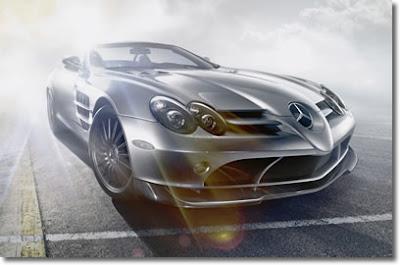 The new Mercedes-Benz SLR McLaren Roadster 722 S opens up astonishing dimensions when it comes to open-top driving. Delivering 478 kW/650 hp, acceleration from 0 to 100 km/h in 3.7 seconds and a maximum speed of 335 km/h, this two-seater cabriolet surpasses the existing benchmark among open-top super sports cars – the SLR McLaren Roadster. Both vehicles feature a fully retractable folding soft top capable of withstanding the high speed and are made of carbon fibre. This endows both models with a very high degree of safety and extreme torsional stiffness. In addition to increased power, the new SLR McLaren Roadster 722 S features even more dynamic suspension tuning and improved aerodynamics. While enjoying exceptional performance, the new roadster’s occupants in no way lose out in terms of comfort or the vehicle’s suitability for everyday use. With its sporty, premium-quality interior appointments and distinctive motorsport pedigree, the new SLR McLaren Roadster 722 S is limited to 150 vehicles and will inspire the most discerning automotive enthusiasts.
The new Mercedes-Benz SLR McLaren Roadster 722 S opens up astonishing dimensions when it comes to open-top driving. Delivering 478 kW/650 hp, acceleration from 0 to 100 km/h in 3.7 seconds and a maximum speed of 335 km/h, this two-seater cabriolet surpasses the existing benchmark among open-top super sports cars – the SLR McLaren Roadster. Both vehicles feature a fully retractable folding soft top capable of withstanding the high speed and are made of carbon fibre. This endows both models with a very high degree of safety and extreme torsional stiffness. In addition to increased power, the new SLR McLaren Roadster 722 S features even more dynamic suspension tuning and improved aerodynamics. While enjoying exceptional performance, the new roadster’s occupants in no way lose out in terms of comfort or the vehicle’s suitability for everyday use. With its sporty, premium-quality interior appointments and distinctive motorsport pedigree, the new SLR McLaren Roadster 722 S is limited to 150 vehicles and will inspire the most discerning automotive enthusiasts.
Spectacular dimensions in open-top driving are opened up by the new Mercedes-Benz SLRMcLaren Roadster 722 S. With an output of 478 kW/650 hp, acceleration from 0 to 100 km/h in 3.7 seconds and a top speed of 335 km/h, this open two-seater betters the standard set for open-air super-sports cars by the SLR McLaren Roadster. Both have a fully recessible soft top suitable for high speed driving, and are made from carbon fibre. This produces a very high level of safety and extremely high torsional strength. In addition to a higher engine output, the new SLR McLaren Roadster 722 S has an even more dynamic suspension setup and further aerodynamic improvements.
By naming this new model variant the SLRRoadster 722 S, Mercedes-Benz is recalling the historic victory won at the classic Mille Miglia long-distance race in 1955 by British motor-racing legend Stirling Moss and his co-driver Dennis Jenkinson, in a Mercedes-Benz 300 SLR with the starting number 722. The Mercedes-Benz SLR McLaren Roadster 722 S continues the legend of the successful 1950s SLR racing sports cars, with innovative technology adopted from the world of motorsport.
Engine hand-built by AMG
The powerful heart of the SLR Roadster 722 S is a supercharged 5.5-litre V8 engine which is hand-built in the Mercedes-AMG engine shop in Affalterbach. The special strengths of this high-performance engine include extraordinary responsiveness to movements of the accelerator, a high torque and an unmistakable V8 sound. Moreover, with an output of 478 kW/650 hp and 820 Nm of torque, power is on tap almost to excess (SLR McLaren Roadster: 460 kW/626 hp, 780 Nm). Accordingly the new model variant meets the wishes of the most discerning customers for even more sportiness combined with excellent day-to-day practicality.
The five-speed automatic transmission developed by Mercedes-Benz is designed for high performance. It is specially configured for a very high torque, and allows the driver to choose between two sets of shift characteristics. As a result the roadster achieves performance figures that are even outstanding for the high-end sports car segment: the SLR Roadster 722 S absolves a sprint from zero to 100 km/h in a breathtaking 3.7 seconds, and 200 km/h is reached in 10.6 seconds. The maximum speed is 335 km/h, which is unrivalled by any other series-production roadster.
Even more dynamic suspension setup
The spring and shock absorber configurations of the suspension are stiffer, and the body has been lowered by 10 millimetres at the front and rear. This ensures the greater handling stability of the Mercedes-Benz SLR McLaren Roadster 722 S, with a significant improvement in handling dynamics. The lightweight, 19-inch forged aluminium wheels allow a view of the red-painted brake callipers on the highly-resistant carbon-fibre/ceramic brake discs, which make for impressive deceleration figures.
 Sophisticated aerodynamics and a fabric soft top suited to high-speed driving
Sophisticated aerodynamics and a fabric soft top suited to high-speed driving
The outstanding qualities of the 722 S are complemented by the fully recessible fabric soft top, which blends harmoniously into the flowing lines of the roadster. The weave structure of this high-tech roof material reflects the carbon-fibre look, guarantees full day-to-day suitability in any weather conditions and allows the vehicle a top speed of 335 km/h – a unusual figure for a roadster. Thanks to favourable aeroacoustics, conversation during open-air journeys is still possible at well over 200 km/h.
The soft top opens and closes semi-automatically in around ten seconds, combining comfort expectations with the purist nature of the roadster. For opening, the roof needs to be unlatched at the windscreen frame and lifted slightly, after which it folds down electrically. The front section of the soft top features an integral aluminium cap, which effectively prevents "ballooning" at high speeds.
The handling and aerodynamics of this high-end roadster were optimised for high speeds in the wind tunnel. The aerodynamic concept follows that of the SLR Coupé, with an airbrake integrated into the boot lid, an enclosed underbody and a diffusor in the rear bumper to ensure the greatest possible downforce on the rear axle. The so-called airsplitter at the front end augments this downforce, while small wheel spoilers reduce turbulence at the rear axle. The result is precise handling and steering at high speeds.
 Outstanding performance and safety thanks to carbon fibre technology
Outstanding performance and safety thanks to carbon fibre technology
In technical terms the 722 S benefits from the long experience of Mercedes-Benz and its Formula-1 partner McLaren. With the exception of two aluminium frames, the body is completely of carbon-fibre materials (CFRP). This makes it highly exceptional among high-performance sports cars. Especially for the roadster, the sophisticated carbon-fibre technology was developed further for the monocoque. The result is low weight, exemplary energy absorption and therefore a high level of occupant safety, plus a torsional rigidity that is unprecedented for an open-top car. It allows outstanding handling characteristics that are otherwise only found in closed super-sports cars.
A high level of safety is provided by unique carbon-fibre crash structures, steel-reinforced A-pillars and two fixed rollover bars. Other safety features include adaptive airbags, knee and sidebags, belt tensioners and a tyre pressure monitoring system.
A thoroughly sporty appearance
The roadster has a crystal antimony grey paint finish, which highlights the sculptured look of this high-performance car particularly effectively. The carbon-fibre technology is visually complemented by the black, grid-like air vents on the bonnet and the front and rear light modules with palladium grey surrounds.
In the interior, outstanding lateral support is guaranteed by sports bucket seats upholstered in a combination of semi-aniline leather/Alcantara. Striking visual highlights are provided by the contrasting seams in 300 SL red, the embossed 722 S lettering on the head restraints and the likewise red seat belts. Frequently used controls such as the shift and parking brake levers are lined in particularly high-grip and moisture-absorbing suede leather. In the interior too, the generous use of carbon-fibre underlines the high-performance philosophy and adds a particularly puristic touch.
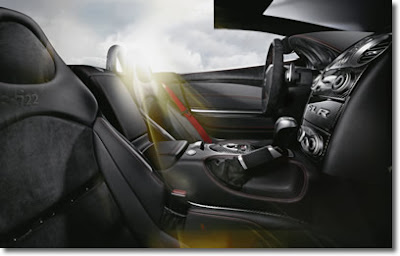 Exclusive appointments
Exclusive appointments
The exclusive appointments include two-zone automatic climate control, a high-quality BOSE Premium sound system, a multifunction sports steering wheel with shift paddles and a navigation system with an integrated radio and CD player.
This limited edition of 150 examples is predominantly hand-built at the Formula 1 workshops of McLaren in Woking, England, and is available from January 1, 2009.
Mercedes-Benz SLR McLaren Roadster 722 S: Thrilling high-performance roadster Stuttgart, Sep 29, 2008 Official Mercedes-Benz Press Release
2009 Maserati Quattroporte S
 Maserati Quattroporte, the model which created the category of "Luxury Sports Sedan", can be considered something of a Maserati masterpiece. After five years of success, with more than 15,000 cars delivered and 46 international awards, the Quattroporte is now being presented with a new look and new technical solutions.
Maserati Quattroporte, the model which created the category of "Luxury Sports Sedan", can be considered something of a Maserati masterpiece. After five years of success, with more than 15,000 cars delivered and 46 international awards, the Quattroporte is now being presented with a new look and new technical solutions.
The history of art is characterized by audacious artists who challenged pre-existing conventions and contributed seminal works. Some artists even challenged themselves by remodeling their own works and taking them to the next level.
Leonardo Da Vinci produced a second version of his masterpiece known as "The Virgin of the Rocks" and, 400 years later, Matisse reinterpreted his original version of "Le Luxe". They are essentially new works; although they are identical in size and very similar in composition to the originals; it is the new style that makes the second versions the most influential.
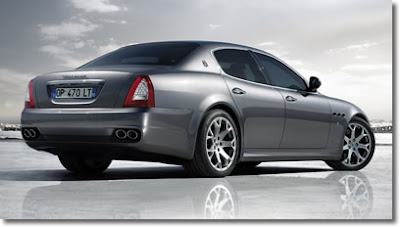 With some degree of similarity, Maserati is now realizing its second "painting": the new Maserati Quattroporte.
With some degree of similarity, Maserati is now realizing its second "painting": the new Maserati Quattroporte.
Thanks to Pininfarina's unrivalled and skilful hand, the Maserati Quattroporte is being refined in a fresher and more modern way, yet always mindful of the class, glamour and exclusivity which characterise the Maserati Quattroporte's style.
The personality and glamour of the Maserati flagship are now represented by two products: the Quattroporte and the Quattroporte S. The former is fitted with the familiar 4.2 litre 400 Hp V8 engine, while the latter adopts the new 4.7 litre 430 Hp V8 recently introduced on the GranTurismo S, with a different specification. Both cars have the 6-speed automatic transmission developed in association with ZF.
The main styling changes are to the most recognizable features. First of all the front, where the new grille, with its vertical slats, is reminiscent of the GranTurismo. The front and rear light units are also updated, featuring LEDs. On the side, the under-door moulding is more noticeable, with a line that runs into that of the new bumpers, which have a wider protective band and more pronounced rear styling. The door mirrors are also new, with a more dynamic shape and a more streamlined mounting to the door.
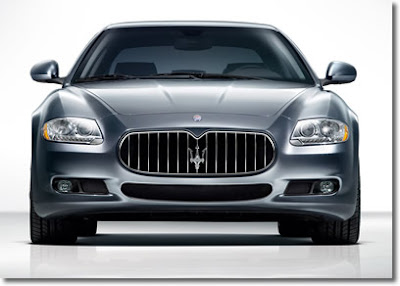 The interior has a new central console; the controls are grouped more closely together for even more convenient operation.
The interior has a new central console; the controls are grouped more closely together for even more convenient operation.
The car's range of navigation systems is also fully updated, now comprising the New Maserati Multimedia System.
Two new shades of leather, Marrone Corniola and Sabbia, replacing the beige which was previously in the range, debut on the Quattroporte S and Quattroporte respectively.
The new Quattroporte and Quattroporte S will be on sale from September. However, they will be presented to customers and Maserati lovers in different locations all over the world from July onwards.
Maserati Quattroporte - A "Second" Masterpiece Courtesy of Maserati
2007 Koenigsegg CCGT
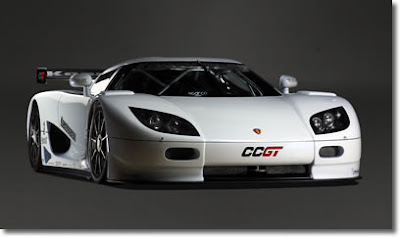
The 2007 Swedish super car Koenigsegg Competition Coupe GT is base on the production CC-model which complies the ACO and FI! GT1 regulations. It’s powered by a 5.0 liter CCX production engine.
The reliability of the race engine is expected be exceptional as it is based on the proven strength and durability of the significantly more powerful road car engine. The minimum weight allowed for a GTI race car is 1,100 kg and most manufacturers struggle to meet this target, having to undergo massive weight saving programs.
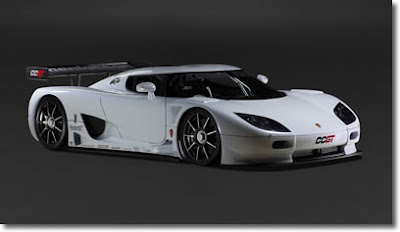
Due to the fact the Koenigsegg CC cars are very light and stiff in road configuration, the racing CCGT weighs in at just under an astounding 1,000 kg. This gives the possibility to place 100 kg of ballast freely within the car structure, still following the set rules. This should give Koenigsegg an interesting advantage over the competition.
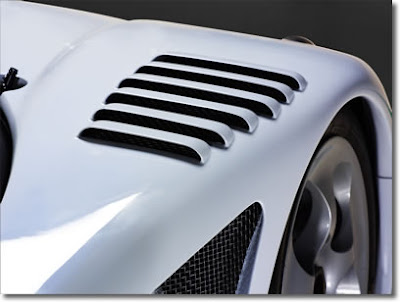 The CCGT has very short overhangs, which could be seen as an issue when it comes to generating enough downforce. However, by further developing the clever and “slippery” design concept of the CC range, Koenigsegg believes they have created a unique package incorporating a surprising amount of downforce combined with a very compact package and optimal weight distribution. Since the CCGT has a short overall length and low overall height, whilst still maintaining adequate track width and length, it is thereby gifted with superior agility compared to most of the competition, which should be evident in future heated racing combats.
The CCGT has very short overhangs, which could be seen as an issue when it comes to generating enough downforce. However, by further developing the clever and “slippery” design concept of the CC range, Koenigsegg believes they have created a unique package incorporating a surprising amount of downforce combined with a very compact package and optimal weight distribution. Since the CCGT has a short overall length and low overall height, whilst still maintaining adequate track width and length, it is thereby gifted with superior agility compared to most of the competition, which should be evident in future heated racing combats.
2009 Ford Mustang Coupe Shelby GT500
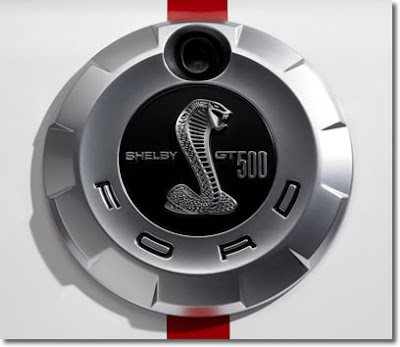
 While the pony-turned-muscle car was just introduced for 2007, there is little new with this model itself, but there is a special edition GT500KR to mark the 40th anniversary of the original Mustang KR, with even more power and performance. The KR stands for King of the Road, and in this case, it means 540 hp thanks to a Ford Racing Power Upgrade Pack that consists of a cold-air intake, and revised ignition timing and throttle calibration, all under a unique carbon fiber hood (the 'standard' GT500 gets an aluminum hood). The suspension is also tuned harder by Ford Racing. There will only be 1,000 KRs, all coupes, so get in line now. But back to the more pedestrian GT500.
While the pony-turned-muscle car was just introduced for 2007, there is little new with this model itself, but there is a special edition GT500KR to mark the 40th anniversary of the original Mustang KR, with even more power and performance. The KR stands for King of the Road, and in this case, it means 540 hp thanks to a Ford Racing Power Upgrade Pack that consists of a cold-air intake, and revised ignition timing and throttle calibration, all under a unique carbon fiber hood (the 'standard' GT500 gets an aluminum hood). The suspension is also tuned harder by Ford Racing. There will only be 1,000 KRs, all coupes, so get in line now. But back to the more pedestrian GT500.
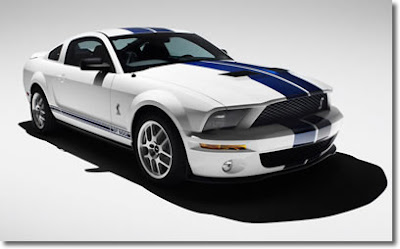 For 2008, there are new front driver- and passenger-seat side air bags to provide side-impact head protection as well as rollover protection. Vapor Metallic exterior paint also replaces Tungsten Grey on the options list.
For 2008, there are new front driver- and passenger-seat side air bags to provide side-impact head protection as well as rollover protection. Vapor Metallic exterior paint also replaces Tungsten Grey on the options list.
The Roots-type supercharger chugs the atmosphere to the tune of 8.5 psi and gets it served cold thanks to an air-to-water intercooler.
Other goodies on the GT500 include 18- x 9.5-inch wheels wrapped in rubber sized at 255/45-18 up front and 285/40-18 out back, hiding 14-inch vented discs squeezed by four-piston aluminum calipers with Brembo proudly displayed on them in the front and 11.8-inch, 2-piston units for the rear wheels.
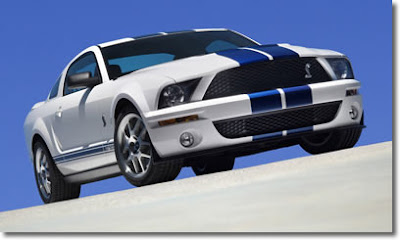 Options on the GT500 include the aforementioned 7-color ambient interior lighting and HID headlamps and Shaker 1000 Audio System (in-dash 6-disc CD, MP3 and 10 speakers), Sirius Satellite Radio, touch screen DVD-based navigation and a Premium Interior Trim Package. In addition, owners can order some appearance goodies to make their GT500 visually closer to that ultra-exclusive KR.
Options on the GT500 include the aforementioned 7-color ambient interior lighting and HID headlamps and Shaker 1000 Audio System (in-dash 6-disc CD, MP3 and 10 speakers), Sirius Satellite Radio, touch screen DVD-based navigation and a Premium Interior Trim Package. In addition, owners can order some appearance goodies to make their GT500 visually closer to that ultra-exclusive KR.
2008 Dodge Viper SRT10
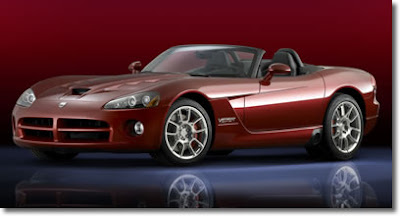
While every SRT vehicle offers balanced, overall performance, the heart and soul of the new 2008 Dodge Viper SRT10 is its standout powertrain. For 2008, SRT ups the ante with a new, 8.4-liter aluminum V-10 engine that produces an astounding 600 horsepower and 560 lb-ft of torque.
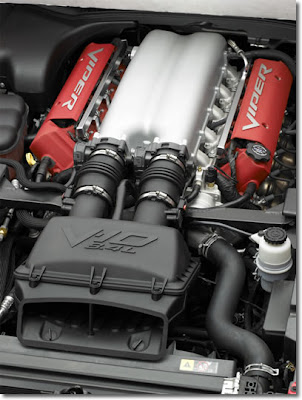 The new 2008 Dodge Viper SRT10 will arrive in Dodge showrooms in
The new 2008 Dodge Viper SRT10 will arrive in Dodge showrooms in Standout Powertrain
When SRT powertrain engineers set out to get more venom from the 2008 Dodge Viper SRT10’s powerplant, their objectives included not only increasing performance, but also complying with stringent regulatory requirements, such as federal Tier 2, Bin 5 and California’s Low Emissions Vehicle (LEV) 2 mandates.
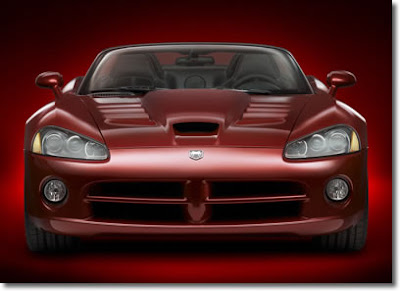 The 2008 Dodge Viper SRT10’s V-10 channels its power through a new, smaller-diameter, twin-disc clutch (a change from the previous larger-diameter, single-disc setup). The new clutch reduces rotating inertia by 18 percent, resulting in reduced clutch-pedal effort and improved engagement feel.
The 2008 Dodge Viper SRT10’s V-10 channels its power through a new, smaller-diameter, twin-disc clutch (a change from the previous larger-diameter, single-disc setup). The new clutch reduces rotating inertia by 18 percent, resulting in reduced clutch-pedal effort and improved engagement feel.
The transmission is the latest evolution of the Tremec T56 six-speed manual, known as the TR6060. It features 10 percent wider gears for higher torque capacity and a new synchronizer package. A new shifter system results in reduced shifter travel. Club racers will applaud a new provision for adding an external transmission cooler.
Bold Exterior Styling and Race-inspired Interior Design
The 2008 Dodge Viper SRT10 remains available in two body styles – Roadster and Coupe. Both feature a dramatic new hood with a larger, more efficient hood scoop for air induction and larger, functional hood louvers to facilitate a greater cooling effect for the more powerful 8.4-liter, 600-horsepower V-10 engine underneath.
Eight exterior colors will be introduced throughout the model year – five of which are all-new including Venom Red, Snakeskin Green, Viper Violet, Viper Orange and Bright Blue. Racing stripes continue to be an option with six dual painted stripe colors available: white, black, silver, graphite, blue and red.
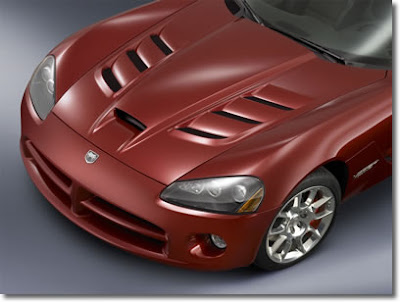 The 2008 Dodge Viper SRT10 cockpit retains its characteristic red push-button starter and performance-oriented, highly functional instrument panel with center-mounted tachometer and 220-mph speedometer.
The 2008 Dodge Viper SRT10 cockpit retains its characteristic red push-button starter and performance-oriented, highly functional instrument panel with center-mounted tachometer and 220-mph speedometer.
Five interior colors will be available in 2008: black, and four new color combinations in black/red, black/blue, black/slate or black/natural tan. A choice of bezel finishes on the center instrument panel and console adds to the increased level of customization.
Bugatti Veyron 16.4 Grand Sport
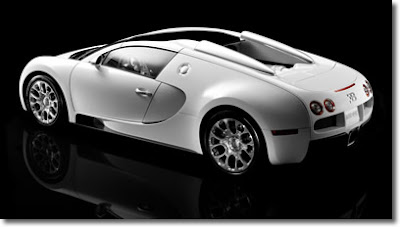
The world’s most significant celebration of the automobile takes place annually in
In response to customer demand, significant modifications have been made to the vehicle’s complex structure to make possible open-top driving, thereby adding a new dimension to this high-performance sports car. Incorporating a host of new and innovative safety and equipment features, it is the world’s fastest and most exciting roadster. It is immediately recognizable as a result of its slightly higher windscreen, stylized daytime running lights, and lightweight, transparent polycarbonate roof.
The main challenge in developing the new Bugatti Veyron 16.4 Grand Sport with removable roof resulted from the unique structure of the fixed-roof Bugatti Veyron. An optimum combination of rigidity and lightweight engineering ensures the monocoque passenger cell of the original model is extremely strong while weighing an absolute minimum – it is a central element of the vehicle’s structure. As the roof is an integral part of this, removing it meant the load paths had to be completely redesigned to maintain the vehicle’s rigidity and crash safety, and to offer additional protection from side impacts and rolling.
As a result, the monocoque structure has been reinforced around the side skirts and the transmission tunnel. The B-pillars have been cross-stiffened using a carbon fibre support, and a central carbon plate has been positioned beneath the transmission tunnel to ensure the vehicle suffers from less torsional flexing than any other roadster.
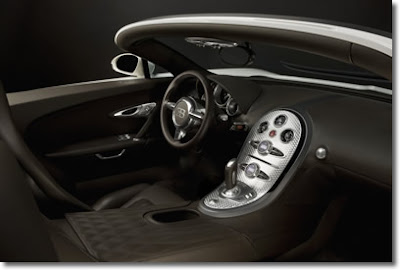
The doors of the new Bugatti Veyron 16.4 Grand Sport are made of carbon fibre, and house an integrated longitudinal beam.
In the event of an accident, this transfers the load from the A to the B-pillar, thereby dissipating impact energy. Furthermore, the two redesigned air intakes for the 16-cylinder mid-engine now feature 10-centimetre wide carbon-fibre elements to offer protection should the car roll.
Along with moisture-resistant, backstitched leather, a range of new equipment features has been added to the interior, including a reversing camera with 2.7-inch monitor in the rear-view-mirror, and the “Puccini” sound system with digital signal processor.
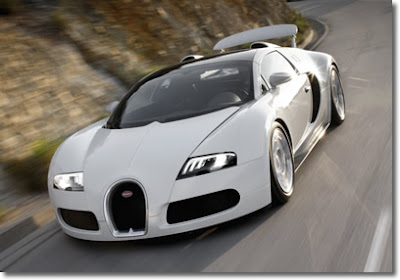
When the roof is closed, the Bugatti Veyron 16.4 Grand Sport can reach 407 km/h, while speeds of up to 360 km/h are possible with roof off. Should it rain, an innovative folding roof stored in the luggage compartment can be opened up like an umbrella at any time. When this folding roof is in place, the car can travel at up to 130 km/h.
Assembled by hand at the company’s headquarters in
Molsheim/Pebble Beach,
2009 BMW M3 Race Version
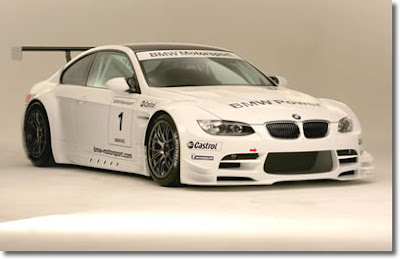
In the course of developing the race version of the BMW M3, BMW's engineers were faced with an ambitious task: to improve upon the sportiness of an already sporting car. A better base would, though, be difficult to find. In standard form the vehicle delivers powerful dynamics and sporting aesthetics. Thanks to an eight cylinder engine producing 414 bhp, BMW's customers are provided with a unique driving experience.
Those engine blocks, cast in BMW's light alloy foundry in
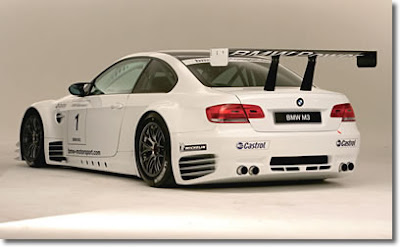
The race version of the BMW M3 is clearly aimed at the top echelon of motorsport. As such, it is no surprise to discover that in the course of its development, begun in mid-2007, numerous Formula One techniques were applied. These include computational fluid dynamics (CFD) and wind tunnel analyses, both of which have ensured the best possible aerodynamic package for the BMW M3.
Intelligent control systems have been incorporated throughout the BMW M3. The POWER400 control unit actuates all the accessories fitted to the car, such as lights, wipers, etc., via two bus systems. Traditional relays and fuses are thus eliminated, ensuring considerable weight saving, improved reliability and ease of application. The functions of the BMW P65 engine are managed by an ECU 408 electronic control unit, developed in-house by BMW Motorsport. The software and applications, too, have been developed by the experts in

An intensive test program, during which the performance of the race car will be honed by BMW Motorsport, looms for the BMW M3 over the coming months. Development drivers will be BMW works drivers Andy Priaulx (GBR), Jörg Müller (GER) and Augusto Farfus (BRA), currently racing in the FIA World Touring Car Championship (WTCC). The aim is, after all, for the BMW M3 to be an immediate front-runner upon its comeback to the American Le Mans Series.